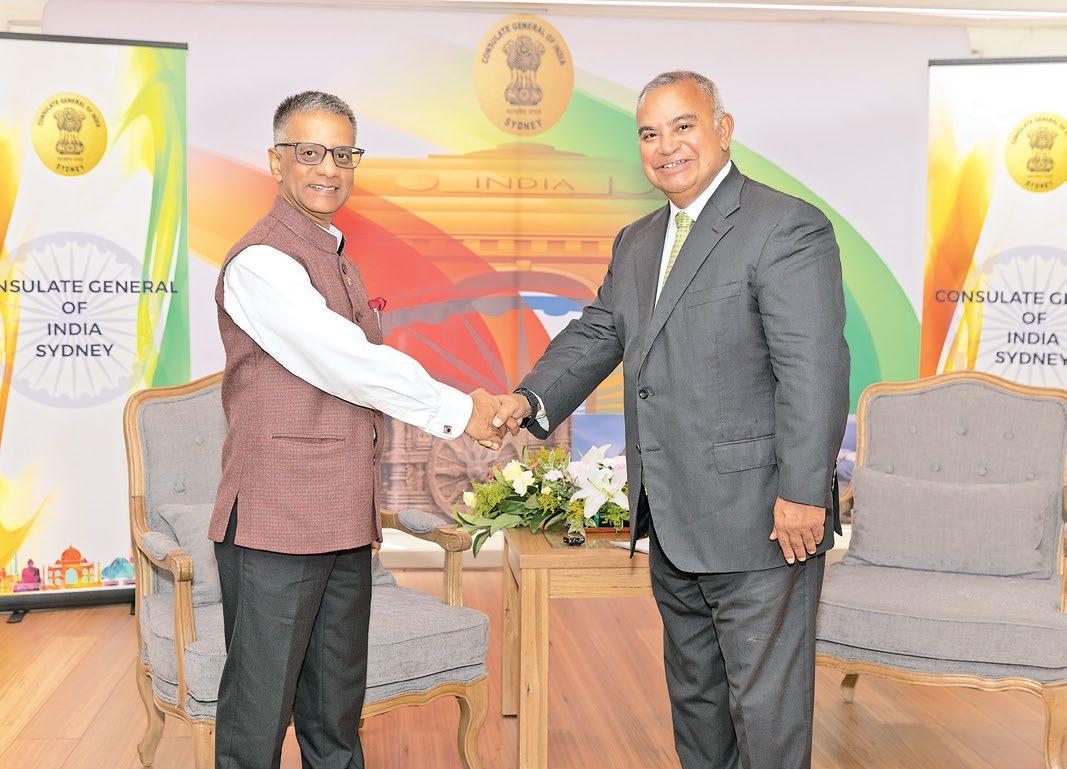


SYDNEY MARCH 2024 Vol. 31 No. 6 FREE All things Indian. In Australia. indianlink.com.au JULY 2023 1 Level 24/44 Market St, Sydney 2000 • GPO Box 108, Sydney 2001 • Ph: +61 2 9279 2004 Celebrating 29 years and 27 Multicultural Media Awards Growth, hope and stability
High Commissioner Gopal Baglay
INTERVIEW
NSW Premier Chris Minns

2 MARCH 2024 www.indianlink.com.au

MARCH 2024 3

4 MARCH 2024 www.indianlink.com.au
PUBLISHER Pawan Luthra
EDITOR
Rajni Anand Luthra
CONTRIBUTORS
Torsha Sen, Bedashree Gogoi, Vivek Asri, Renesh Krishnan, Khushee Gupta, Nadine Silva, Frankey Fernandes, Sharon Rundle, Ritam Mitra, Gaurav Masand, Petra O’Neill, Minal Khona, Auntyji
SALES AND MARKETING
Charu Vij ADMN
Aanchal Matta
Indian Link is a monthly newspaper published in English. No material, including advertisements designed by Indian Link, may be reproduced in part or in whole without the written consent of the editor. Opinions carried in Indian Link are those of the writers and not necessarily endorsed by Indian Link. All correspondence should be addressed to:
INDIAN LINK MEDIA GROUP
Level 24/44 Market St, Sydney 2000 GPO Box 108, Sydney 2001 Ph: 02 9279-2004
Email: info@indianlink.com.au
The Amitabh Bachchan dialogue I hate
 IBY PAWAN LUTHRA
IBY PAWAN LUTHRA
flinch every time I hear this.
The 2001 film Kabhi Khushi Kabhi Gham with its galaxy of stars may have gone on to become a classic, but I’m amazed that no eyebrows were raised when lead actor Amitabh Bachchan, as family head, would declare, once thundering to his wife, “Keh diya na, bas. (I’ve said so, and that’s it.)”
The phrase, and the character’s attitude throughout the story, reeks of traditional patriarchy at best, and coercive control at the worst.
Some 24 hours after International Women’s Day this year, came the news of the horrific death of Chaithanya ‘Swetha’ Madhagani, her body found dumped in a wheelie bin near Geelong.
Reports say her husband Ashok Raj fled to India soon after, deposited their fouryear-old son at her parents’ doorstep, and vanished.
While domestic violence can impact anyone, regardless of age, gender, sexual
orientation, ethnicity, religion, ability, or location, particularly vulnerable are migrant communities, a fact acknowledged by the Victorian Royal Commission into Family Violence. Factors which put migrant women more at risk include social isolation, characteristics of Indian society such as patriarchal attitudes including position of women and dowry, traditional marriage practices where the couple do not know each other before the wedding and/or migrating, difficulty in getting a job in the new country of migration, frustration and delays including monies spent in the migration process, and settling into the new culture. Being on temporary dependant visa also can change relationship dynamics.
Perhaps more mention needs to be made of coercive control in family dynamics as a major cause. Coercive control occurs when someone uses a pattern of abusive behaviours over time that hurt, humiliate, isolate, frighten, and threaten a current or former intimate partner in order to control or dominate them. It is criminalised in NSW, the first state to make it a standalone crime (following the horrific murder of our own community’s Preethi
Reddy in 2019), and Queensland passed this landmark legislation this month.
State and Federal Governments have assistance available to anyone who may be experiencing domestic, family, or sexual violence. 1800 RESPECT is an easy-to-remember number for a domestic violence hotline. How can we as a community play our part in raising awareness?
There are many advocates within our own community who are knowledgeable on these issues, who deserve a more frequent platform to raise these issues.
We must educate our children (and ourselves better) about respectful relationships. How are you teaching your sons, for example, about treating women as equals, or to call out unacceptable behaviour in their peers? Are you rolemodelling these behaviours yourself?
From a government point of view, bridging visas and other social facilities for people experiencing domestic violence would help.
While Women’s Day events continue to be held over this month, we must look at what we can do in our own lives, to stop this scourge of violence against women - a basic human right of safety in their own homes.

MARCH 2024 5
EDITORIAL All things Indian. In Australia.


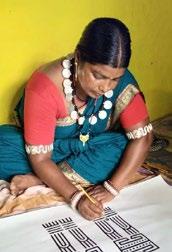
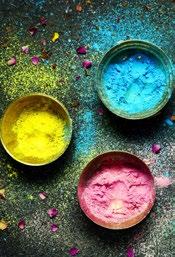


6 MARCH 2024 www.indianlink.com.au SPECIAL FEATURES 18 SPECIAL FEATURE A chat with Indian High Commissioner Gopal Baglay 20 ARTS Mangala Bai Maravi, tribal tattoo artist, at the Sydney Biennale 24 COUTURE Aboriginal designs on your sari 34 FOOD Insta-worthy Holi recipes 37 SPORT Nikhil Chaudhary of Hobart Hurricanes PRIME TIME WITH PREMIER MINNS Pawan Luthra in conversation with NSW Premier Chris Minns INTERVIEW CONTENTS 34 18 24 20 12

MARCH 2024 7
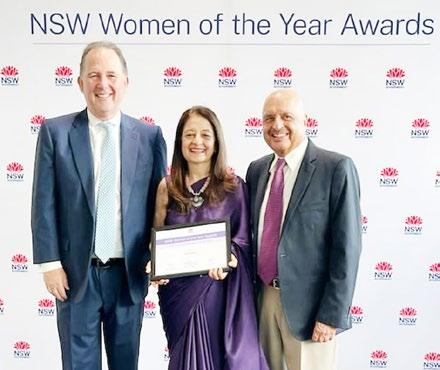
NSW LOCAL WOMEN OF THE YEAR 2024
In this year’s awards Mala Mehta took the honours for her local area Wahroonga, and 15-year-old Aarohi Bansal was listed in the ‘One To Watch’ category
Sashi Bhatt wrote: Congratulations Mala. You are always kind, generous and helpful to people when in need. You truly deserve this award.
Shantha Viswanathan wrote: What wonderful news. Mala, you deserve so much more for all you do. Congrats.
Niranjan Ramjee wrote: Apko dhanyavad. Raising the profile of women in community.
Anu Shivaram wrote: Hearty congratulations to Malaji for this well-deserved honour. You make us all proud!
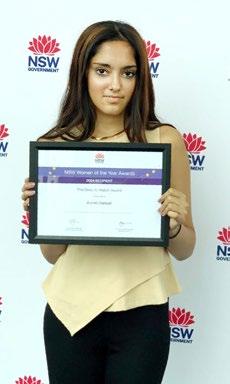
Women NSW wrote: Aarohi is a remarkable young woman!
Mala Mehta wrote: As an alumna of Indo-Aust Bal Bharathi Vidyalaya, Hindi School Inc, Aarohi, you do us all proud at achieving so much at such a young age. This is the beginning of your journey and may you continue to achieve greater heights!
Indo-Aust Bal Bharathi Vidyalaya - Hindi School Inc wrote: Thank you all so much for your warm wishes but this one is not just for me but for us all in the WSHK and IABBV Hindi School family as we work collaboratively as a team, each one coming forward to help without being asked. So proud of our student Aarohi, she is definitely one to watch as she begins her journey.
Notes of congratulations also came in from Usha Dommaraju, Her World Cricket Tour, Mittu Gopalan, Pushpinder Oberoi, Jyoti Dogra, Kiran Jassal, Divya Dhingra, Gaytri Singh, Aloysious Dacunha, Sam Sachdev, Shivani Ruikar, Usha Srinivas, Emie Roy, Kavitha Jeyakumar, Ruchi Sanghi, Ashima Sakkarwal, Sonia Sadiq Gandhi, Harman Foundation, Sheila Dhillon, Amar Singh, Smita Shah, Meena Mahanty Kumar, Rajlaxmi Nair, Shanti Raman, Amita Gill, Anjali Teeluck Tendulkar, Uma Vijai, Yamini Hemanth, Anita Rao, Tila GeraPopat, Poornima Menon, Sheetal Bansal, Keiasha Naidoo, Anoop Johar, Rajni Luthra, Sangeeta Sharma, Shirley Jacob, Charu Hurria, Neeru Saluja, Sarita Sachdev, Poornima Bhatt, Urvashi Seth, Mohit Tolani, Gaytri Singh, Shanti Raman, Priya Srinivasan, Rashmi Watson, Bruce G Wood, Bhagya Shankar, Dee Raghwan and Shirley Jacob. Indian Link’s congratulations also to SEEMA BALA SUBRAMANIAM of Blacktown NSW, MELISSA MONTEIRO of Castle Hill, and SHALINI PRATAP of Tamworth, who each won the NSW Local Woman of the Year award in their local area.
The NSW Local Women of the Year is an annual program celebrating outstanding women in local communities. This is a separate program that runs alongside the NSW Women of the Year Awards. Recipients are nominated by their local Member of Parliament.

ASHA BHAT IS MOORDITJ YORGA (STRONG WOMAN)
The WA-based Asha Bhat OAM, CEO of the Southern Aboriginal Corporation, sat down with RAJNI ANAND LUTHRA after being announced as the winner from her state in the 2024 Australian Awards for Excellence in Women’s Leadership
Warida Wholistic Wellness wrote: Too deadly, Asha. (Moorditj Yorga translates to ‘strong woman’ in the Noongar language of WA’s South West. Colloquially, it also means ‘deadly’.)
Women & Leadership Australia wrote: Wonderful article, thank you for sharing. Congratulations again to Asha! It is an honour to recognise her work. Moosie Arnold wrote: Go girl!
Samith Rao wrote: You are a true inspiration. More power to you for all the future good works.
Mala Mehta wrote: Congratulations Asha.

INKED NARRATIVES: TRIBAL TATTOO ARTIST MANGALA BAI
TORSHA SEN caught up with Mangala Bai Maravi and Amit Arjel, tattoo artists from India, invited to exhibit at the Biennale of Sydney.
Mala Mehta wrote: Awesome Mangala Bai can't wait to see your work. Thanks Indian Link for sharing this.
Shobha Sharma wrote: Wow Mangala Bai, love your art! So good to see it showcased.
Yadu Singh wrote: Wonderful indeed. Where in Sydney is Mangala exhibiting her marvellous talent?
@milkkcakee wrote: Congratulations Amit. So much more to come ahead. @shiza_khan18 wrote: Very proud of you, Amit Dipen Rughani, @eternaltrixiefan, @themaskbeneath, @thinkayushi, @nitishhh_13, @golden.thread.banners, @michikxo, @czana.kml, @ the_baba__yagga_, @theyogasticaditi and @explorenepal_sanjay also wrote congratulatory notes.
8 MARCH 2024 www.indianlink.com.au YOUR SAY





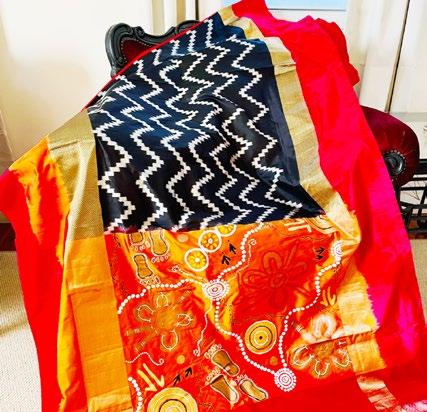
ABORIGINAL SARIS
RAJNI ANAND LUTHRA and NADINE SILVA on the designs of Aboriginal artist Preston Warren coming together with the allure of designer Shivanie Dheeraj’s saris to create a sold-out collection Presten Warren of Painted Studios wrote: Loved working on this project!
Shivanie Dheeraj wrote: Eternally grateful, Painted Studios and Indian Link
Malar Standring wrote: Amazing. How do we purchase these saris?
Josie Couzner wrote: They sold out!?! Legendary.
Jiva Jehanathan Parthipan wrote: Beautiful. How do we order? Any online links?
Sanjukta Mukherjee wrote: Would love to wear one of their saris!
Lalita Singh wrote: Oh yes! Love this.
Sukhmani Khurana wrote: What a fabulous story of collaboration, honouring heritage, and taking it forward. The saris all look so vibrant and unique, and I want to pre-order one for Diwali already.
Saroj Bala Saini wrote: Naina, Deepa, Anjana, Shampa, Swati, Toshi - what do you all think? Shall we get one each?
Pushpa Rama wrote: Awseome. Where can we get them?
Donna Van Vliet wrote: Well done.
Sharyn Payne wrote: Absolutely stunning. Congratulations Saree Selections wrote: Heartfelt thanks to Indian Link for recognising our collaboration. Our sincere gratitude for the warm acknowledgement and appreciation of our work with Presten Warren of Painted Studios to bring forth a collection of saris inspired by his Aboriginal artwork. Collaborating with Presten has been a journey of cultural exchange, creativity and mutual respect.
WHERE IN INDIA
This 12th century Fort is said to have had a huge vault where the famous Kohinoor and other diamonds were stored. Where in India?

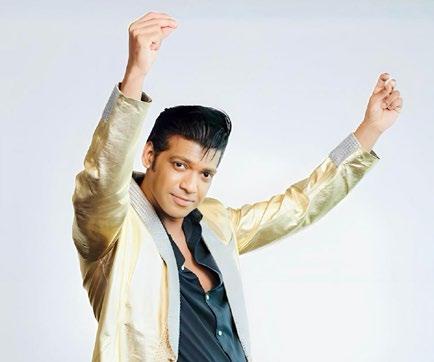
ELVIS, BY GERARD MASCARENHAS
FRANKEY FERNANDES spoke with award winning Elvis tribute artist, the Goa-born Perth-based Gerard Mascarenhas, on that desi touch to the ‘rubber legs’ moves
Rajanikant Madkaiker wrote: We are proud of you. Great achievement. Your dad must be looking down on you from heaven.
Carolyn White wrote: Congratulations Gerard this is so awesome. Katherine Ferguson wrote: Awesome Gerard, well done, wish you nothing but the very best.
Erica Houston wrote: A great story, Gerard, and on behalf of The Heartbeats, you are all class for giving us a mention.
Carolyn Fish wrote: Aw yay! Brilliant article and wonderful words Gerard. Congratulations.
Jules Nixon-Smith wrote: Great interview Gerard. Keep doing what you’re doing! Elvie Santos Pereira wrote: Good on you Gerard! Good luck in your upcoming shows.
Narelle Watts wrote: Wonderful article Gerard. Cannot wait until April so we can get started on our trip over to WA.
Charmayne Fernandes wrote: Brilliant. Well spoken, congratulations Gerard. Thanks also to Kerry Daly, Vickie Crenshaw, Matt Birse, Patrizia Bartolomei, Joanne Currey, Geir Borholm, Beryl Weymouth, Cathy Finau, Sheryl Scharkie and Susan Godfrey for their notes of appreciation.
WHERE IN OZ
Where in Oz will you find this beautiful temple dedicated to Lord Shiva?

Readers Jalpa Patel, Dipti Desai, Varada P Shinde, Kirti Singla, Leena Vohra, Nishit Brahmbhatt and Meena Sunder got it correct: Shri Shiv Mandir in Minto, Sydney.

MARCH 2024 9
Readers Jyoti Dogra and Jillian Abery got it right: Golconda Fort in Hyderabad, Telangana.
Get the best of Indian Link straight in your inbox. Scan the QR code to sign up to our weekly enewsletter

10 MARCH 2024 www.indianlink.com.au

MARCH 2024 11
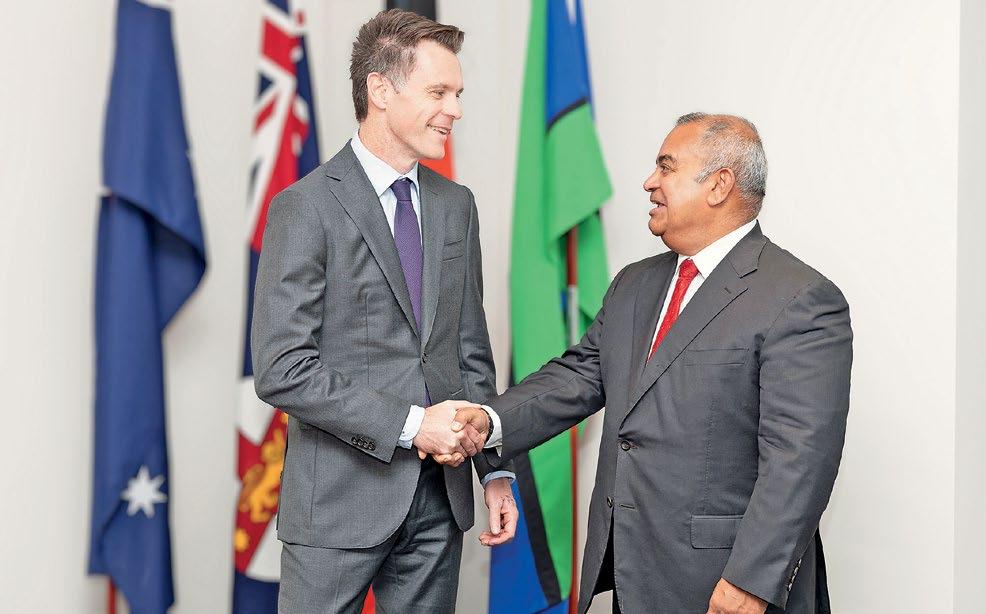
Prime time with PREMIER CHRIS MINNS
The Premier of NSW in a wide-ranging conversation with PAWAN LUTHRA
Chris Minns was NSW Opposition Leader when I last interviewed him in March 2023. A year down the track, he joins me now as Premier of the state. Welcome to Indian Link, Premier Minns. Thank you thrilled to be here. We get Indian Link in our office, an amazing publication.
So it's a real honour to be here with you as the premier
At the very outset, we’d like to clarify something. There’s a photograph of you doing the rounds in the community and there is some intrigue as to the back story there. What are you and Albo listening to here: is it a. an ACDC song, b. the latest Bollywood hit showing your

love for India, c. A TEDx talk on good leadership values, d. mental telepathy on helping Australians with the cost of living crisis, or e. something else.
(Laughing) Well, it's number five - something else. I've got a good answer for this. We were listening to a translation of Prime Minister Modi’s speech. This was at Qudos Arena, when the Prime Minister of India was here, and Anthony had a spare earphone, with which I could listen in to the translation.
You forgot to bring your earphones.
(Laughing) I forgot to bring my earphones. It wasn't long after the election, so I wasn't focused on what I had to bring.
And what did you think about your experience at Qudos Arena?
Amazing! It was it was really impressive. I didn't quite appreciate how many people would be there. I actually got to introduce the Prime Minister, which was a real honour.
Premier, WA recently sent a 110-member delegation to India; Victorian Premier Jacinta Allan has signaled her first overseas trip will be to India, and Queensland has put together a five-year investment and trade strategy for India. What can be done to raise the tempo of the NSW trade and investment relationship with India?
Well, I have to say something about a trip to India soon. We'll give you more information when we're ready to announce that (we'll absolutely make sure Indian Link knows all of it). I haven't been overseas yet as the Premier, but India will be my number one priority when it comes to the first overseas trip, because I feel there's an enormous opportunity for us there. We’re even in a better position than the other states when it comes to potential opportunities, primarily because we've got such a massive, dynamic, exciting, educated Indian community in NSW - the fastest growing community in the state. I have looked at the diasporaparticularly in Western Sydney although they’re all over NSW - and I think we've got a group of people that are disproportionately university-educated, starting small businesses, understand the culture, the links, the business strategies, and the opportunities in one of the biggest markets in the world. Currently, India is Australia's 11th biggest export destination. We could get far higher up.
Premier, comparing us to other states, Victoria has done much to build a soft power reputation in India. They have invested millions of dollars in programs such as for example the Indian Film Festival of Melbourne, as a result of which Victoria has some 53,000 Indian
international students arriving every year, whereas NSW has about 33,000. We seem to be missing out also on all the benefits which go with the students, like increased tourism when they have friends and family visit. Are we losing on the build-up of the soft power reputation of our state in India? If so, what needs to be done to increase our efforts? Clearly funding community functions like Diwali and Holi is not fully doing the job.
With the large Indian-Australian community in NSW there's an opportunity to celebrate, as part of our multicultural community, the enormously rich traditions that are within our subcontinent community, our Indian community in particular. I wouldn't necessarily rely on the idea that Melbourne is 20,000 in front of us when it comes to tertiary education and students particularly as an export industry. We’re a lot closer than that. My view is, in the years ahead, we need to be in a position where the ease of trade is turned up to its maximum extent. By that I mean there are so many opportunities for two-way business, trade, immigration as well, as export opportunities. I don't think we're exploiting that yet, and I think the reason for that is, particularly for newly arrived migrants, getting settled in NSW, starting businesses here, focusing on the domestic economy
12 MARCH 2024 www.indianlink.com.au INTERVIEW
Photos: Vishaal Kumar
first, but over time, I would expect them to start orienting to export markets particularly in India. At that point NSW is in a fantastic position to take advantage of those emerging opportunities, so that's the first thing. The second handbrake on economic opportunity is housing. Now last year, Victoria produced 58,000 houses, NSW produced 48,000. Victoria is producing more housing particularly for young people; and demographically speaking, subcontinent Indian communities are of a younger generation. We have to provide housing for them: if we get that piece of the jigsaw puzzle right, everything else is better.
You mentioned that as one of the things you want to achieve in the next 12 months, even though you have many councils fighting you on it. They don't want it in their own backyard - this ability to increase 48,000 housing to, I think you mentioned, 75,000 houses per year. Is that a battle you are ready to take on? This is a battle we're ready to take on, because if we don't then we're not going to have the next generation of young Australians, regardless of their background, calling Sydney and NSW home. And a city without young people is a city without a future. We could talk about it on equity grounds and fairness grounds, and that is, young people having opportunity to housing, joining community, starting family, starting businesses. They're thinking economically, that group, that 30-40-year-old group. If they don't have a place to live, they will leave because they're educated, they can travel, they can move to other jurisdictions and other communities. But if you do keep them here, then they generate so much economic opportunity for the state. Last year we lost twice as many people between the ages of 30 and 40 then we gained - twice as many. So we have to turn it around. If we don't insist on housing, then I don't know what the plan B is for Sydney.
NSW has sister-state status with these six cities: San Francisco, US; Nagoya, Japan; Wellington, New Zealand; Portsmouth, UK; Guangzhou, China, and Florence, Italy. Time to add another one, from India? Maybe… maybe! And I can imagine that the Indian community in NSW would be open for that. That's an interesting statistic, and that would show the evolution of migration patterns to Australia for the last two hundred years. It's really important to me that the largest source of inbound migrants to NSW is from India and we are so lucky to have them. So, time to hunt and look for a sister city in India - may well be the case.
What a wonderful announcement that will make as you announce your trip to India. When we spoke last year, you said, ‘we have a team that looks like the community we hope to represent’. How have you harnessed the strength of this very diverse team?
We have in many respects. It's simply being around the Cabinet table and having that kind of experience in their bones. They're in the most senior positions in the government -the Deputy Premier, the Treasurer of NSW. And we've got Members of Parliament with Indian heritage representing big parts of Western Sydney. I think that brings an understanding into the Indian community in particular that someone like myself wouldn't bring to the table. There is absolutely no
substitute for it. And I don't tend to go around saying we should be congratulated for this. It should just be natural; this is exactly what modern political parties should be doing. They should look like the community they represent, and I'm very very proud to say that that's what Labor has done.
Premier, it's the month of March when we celebrate the diversity of NSW and bring together Australians from all different backgrounds. It's about inclusiveness, respect and a sense of belonging for everyone. Yet we are aware that parts of our community are grieving about the ongoing issues in the Middle East. In your view, is the government doing enough for people from both sides of the conflict?
It is my view that we are. But I've been really honest about this, in the sense that my impact on communities’ unhappiness or grief or apprehension about the events in the Middle East is limited, and the reason for that is that I'm a State Premier on the other side of the world. So, I've said quite a few times that the words we utter in NSW will have limited impact on the conflict in the Middle East, but it can have a major impact on our community here in NSW. My obligation, my responsibility, is to peace and security as the first two orders of priority in NSW. Community harmony is really important, but I've been honest about it - that's going to be elusive in the state for a while, but I cannot compromise on peace and security. That has to be the primary objective.
I understand, but some peak Muslim organisations had announced the boycott of Iftar dinners hosted by state governments before they were cancelled by the governments themselves. Would it be right to admit that a part of our multicultural community is hurting, and it needs to be shown more compassion, action and then reconciliation?
Well, they are hurting, there's no doubt about that. And I want to say a few things in relation to the Iftar dinner, which is not going ahead. Firstly, they (the Muslim organisations) made it clear that they were unable or unwilling to come, and that's the reason I'm not going ahead with it. And the reason I say that is that I don't want a very large Muslim Australian community to believe that we didn't want to hold any Iftar or we weren't prepared to acknowledge and respect those traditions. We were. But secondly, I can't make people attend. This
is an issue that governments right around the world are left to deal with, from Paris to Chicago to New York to cities in the Middle East, to most European capitals. It's not germane to Sydney. So I can't promise that there'll be community healing or harmony on these issues in the short run, because the dispute in the Middle East is continuing, and we have two big communities in NSW representing either side of that conflict, and they've got very passionate views about it and both communities have been traumatised. The ability of government to bring those communities together is limited at the moment. I could sort of lie about it and pretend that it's easy and we'll get it all sorted, but that's not the case.
It’s almost 365 days as Premier for you. The training wheels are off, a quarter of the way in the four-year electoral cycle. What would you count as the three biggest achievements in the last 12 months?
I think removing the wages cap in NSW, so that we could get good productive negotiations with frontline workers in the state. As a result of that we're starting to see both an increase in recruitment for essential workers like police and paramedics. That's Number One. Number Two teachers in NSW are now the highest paid in the country. They were the lowest paid. Any city or community that hopes to have a plan for the future must base it on education, because in my view, you cannot replace the teacher with an app or a computer or website. There's something about that connection between teacher and student, so I think we're going to recruit and retain the best in the brightest to our public schools. Number Three is banning mobile phones in NSW school and yes, I've got three boys…
How have they reacted?
Not happy, but they can't vote (laughs), so you know, doesn't matter so much, but in all seriousness, I've been concerned about mobile phone (usage) among young people for a long time and at least there's a break now. I've got to say, I've spoken to parents and teachers and even students when they're being honest, and they say it's a good decision.
Premier, thank you very much for your time. This was our second interview in two years in the month of March - can I call you in March next year to have another chat? It's a deal.
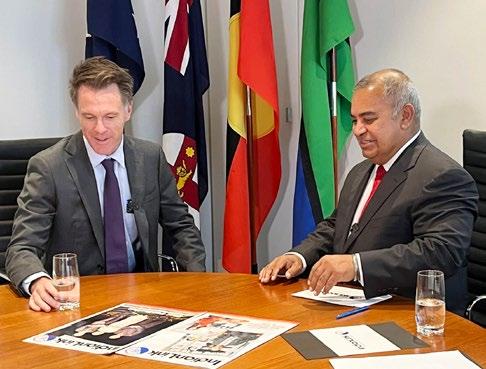
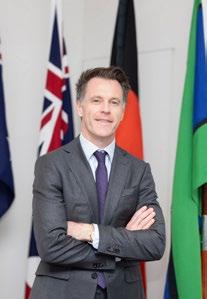
60 Seconds with Premier
The change I want to bring to NSW as premier I want us to be a growing economy, a strong community, and one that's optimistic and hopeful. The job has been harder than I thought. True or false? I have to say it's true. It's a difficult job, 12 months into the job.
My favourite moment as Premier has been… Probably the day I was sworn in, with my family (watching). That was great.
A person I would most like to meet as a premier Volodymyr Zelenskyy, the leader of Ukraine
Micro manager or hands-on boss? I'm involved, but I do think that you've got to pick a good team and let them do their job. So probably I'm not a micro manager.
They say if you want a friend in politics, get a dog. True or false? It's false. I've got some great friends in politics.
Like in the ABC documentary
Nemesis, one word to describe myself
Committed
I wish I had more time to… Surf
What keeps me up at nights Whenever there's a big weather event. I know that's going to be a difficult day the next day.
A movie or TV show I'm watching or have just watched Nemesis
My favourite time of the day Getting home and seeing my family as I walk through the door
When I jog my playlist has these songs… Well, I did jog this morning and I had Frank Ocean, Katy Perry and a band called LCD Soundsystem
My comfort food is… I like Malaysian Food.
Something about me which very few people know I'm an open book. I don't have any secrets. I'm boring. There you go, I'm really boring.
A superpower I wish I had Being invisible will be fun. Maybe flying. Date night to me means… Anna and I going to a movie.

MARCH 2024 13
Chris Minns
Photo: Torsha Sen
Use this QR code to watch the interview on your phone
Photo: Vishaal Kumar


Julian Leeser’s fundraiser is an Indian meal with ScoMo
When ScoMo stirred the masala and rolled out the naans
 IBY RAJNI ANAND LUTHRA
IBY RAJNI ANAND LUTHRA
n what became one of his last official functions as Member of Parliament, former Prime Minister Scott Morrison chose to stir the masala at Delhi Heights restaurant in MP Julian Leeser’s constituency Berowra NSW.
The event was a fundraiser for Leeser, and it booked out the popular eatery on the Friday night before ScoMo made his valedictory speech at Parliament.
The former Prime Minister, a well-known curry aficionado, donned his apron and got in front of the stove to make a chicken curry Madras style, and then got together with Julian Leeser to roll out the dough for the naans. (He refused politely however to insert his hand inside the red hot tandoor to cook said flatbread).
The chicken curry went down very well with the guests, all of them long-time Liberal supporters living in the area. They also savoured, alongside, the other items on the Punjabi-inspired menu prepared by chef Sony Sodhi, including goat curry, butter chicken and paneer.
The gathered diners showed all the enthusiasm of Swifties at a Tay Tay concert – thrilled like teenagers when ScoMo went round to take selfies with each individual guest.
And when he spoke, it seemed like they were all farewelling an era, not just a former prime minister.
Julian Leeser himself started it all off –making mention of the high level of regard he had for Morrison, despite their different stance at the Referendum last year.
“Scott has been one of the most successful prime ministers in recent years,” he said to
applause. “He got a lot accomplished during his tenure.”
The mutual admiration was evident again as Morrison took to the floor. Brushing off their difference as ‘that little thing last year,’ he gushed about Julian as a profound thinker and a deeply intelligent person.
“Julian is one to look forward to, not just for the Liberal Party, but also for our country,” he said.
Later, Mr. Morrison seemed to enjoy himself as he took questions from the audience – touching on issues as wide as school closure during COVID (“We didn’t want to shut the schools down – we’ve now been proved correct”), border closures at COVID (“At least Dan and Gladys were talking, but on the other side… eye roll”), the role of AUKUS and QUAD in Australia’s foreign relations going forward, and how media treats the different sides of politics.
Their political / philosophical differences on some issues notwithstanding, the deep friendship between Morrison and Leeser was clear for all to see.
Another former Prime Minister John Howard had once described the Liberal Party as a “broad church”. It was a concept that shone through at this Julian LeeserScott Morrison fundraiser, in its diversity and unification for the larger Liberal cause.

Curry concepts with Scott Morrison
Your favourite order at an Indian restaurant Saag meat. The most elaborate curry you’ve ever cooked Well, they’re all sort of pretty much the same. The hardest ones I’ve ever made are biryanis. I haven’t mastered a biryani.
A curry you cooked that did not live up to Jenny’s expectation Biryani Did you ever get round to sharing a khichidi with Narendra Modi Sadly no. We threatened it many times but COVID prevented us from doing that. I was supposed to travel there in January 2020. And his visits, we never got to be in the same place where we could do it. Maybe in a post political life, I’ll end up doing it with Narendra in India when I visit. Ever put something Indian into your children’s lunchboxes I usually cook curry on a Saturday night. I usually over cater and there’s always a bit left, and Abbey will often take it with her on the Monday.
A spice which is always in your kitchen Garam masala
There’s a rumour going around that you’ve pitched to Channel 7 a show called Masala Chef. (Laughing) Untrue. Would you like to? Sure, if Channel 7 makes me an offer

Have you ever eaten an onion raw before putting it into a masala No.
A movie you’ve seen about food that you’ve enjoyed? There was an Indian one in which a chef rediscovers his (talent). I can never remember the names of the films, I just watch them.
PAWAN LUTHRA
14 MARCH 2024 www.indianlink.com.au FUNDRAISER
Use this QR code to watch this interview on your phone

MARCH 2024 15
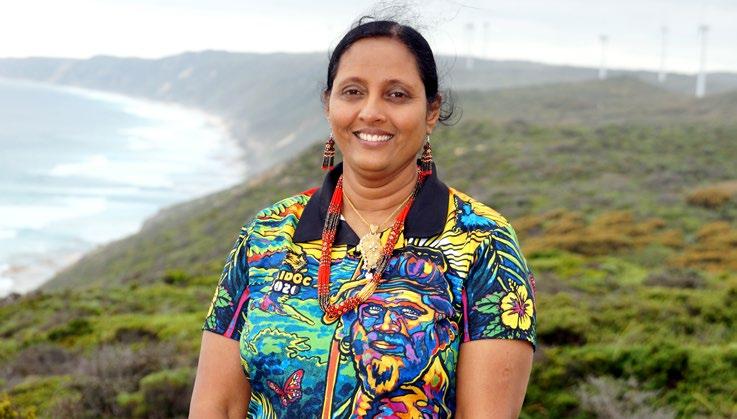
Bringing hope to vulnerable communities
Asha Bhat OAM, CEO of Southern Aboriginal Corporation, wins Excellence in Women’s Leadership Award
 ABY RAJNI ANAND LUTHRA
ABY RAJNI ANAND LUTHRA
sha Bhat of Albany WA is getting used to being called ‘Moorditj Yorga’. It means ‘Strong Woman’ in the language of the Noongar people of Western Australia.
Her latest award proves she is indeed a Moorditj Yorga. Asha Bhat, the CEO of Southern Aboriginal Corporation (SAC), has just been announced as the winner, in her state, of the 2024 Australian Awards for Excellence in Women’s Leadership.
She is recognised for her commitment to social justice and human rights, having made significant impact in the lives of women and marginalised communities, through her work at the SAC.
Founded in 1983, the SAC represents the interests of the Noongar people of southwest WA. Living in small isolated communities then, the SAC has been able to speak for them as one.
The organisation has flourished under Bhat’s 17-year tenure, 11 of these as CEO, and six as Finance Officer.
“A passion for social justice and equality has brought me to Indigenous affairs,” Bhat told Indian Link. “Since taking over as leader at the SAC, this passion has only grown further. I have seen and understood the injustice and the disparity, and it motivates me to work towards upholding the rights of Indigenous people who have been marginalised and oppressed.”
Her work at first was to rebuild a floundering organisation. Today, the range of the activities at SAC has grown tremendously – including housing, domestic violence, health, and environmental

protection. Each of these sectors in itself is multi-pronged, with highly structured activities in each; for eg, in the health vertical alone, there are programs for legal assistance, counselling, advocacy, community legal education.
Developing strategy could not have been simple.
“It wasn’t easy, both at the strategic and at the operational levels,” Bhat admitted. “The different portfolios together provide integrated service delivery. Each of our (verticals) are social determinants; when it comes to employment or family violence
or suicide - they're all interconnected. So it hasn’t been easy. Sometimes, you go from big policy reform in one area to another, and that can be difficult again. Plus, each program has its own bunch of professionals so that makes it complex too. Yet, years of experience to understand the issues involved, and years of experience in building rapport with the Aboriginal people, have helped.”
Bhat is particularly conscious about supporting “self-determined and Aboriginalled solutions”, and “implementing a culturally informed trauma integrated healing approach”.
“This is very important in our decision making,” Bhat elaborated. “Our clients are impacted by trauma. And then we’re dealing with intergenerational trauma, such as Stolen Generation. So, it’s very important in our work to understand trauma from a variety of standpoints, including the colonisation point of view. One important way to do that is to make sure that every decision we make is determined by Aboriginal people, for Aboriginal people. I am merely about providing business expertise, administrative expertise and financial expertise.”
While there is consultation, that itself could be an issue. “Aboriginal people can be over consulted,” Bhat revealed. “Every time we get funding, the goalpost changes. That means we have to go back
“Every decision we make is determined by Aboriginal people, for Aboriginal people. I am merely about providing business expertise, administrative expertise and financial expertise.”
to the community and consult with them again and again, and it's not easy. It's not easy for them either. And many a time consultation goes without rewarding them for their cultural knowledge – it’s just taken for granted. It costs them - to be donating their cultural time, while donating their cultural knowledge. So that’s another thing I’ve implemented within the organisation - to make sure that every person who has donated time for us, is acknowledged and rewarded.”
It's clear that keeping people front and centre is vital to Bhat’s style of leadership. With nearly twenty years of work in Aboriginal communities, what is that one achievement that she looks upon with pride?
“One of my proudest achievements has been in spearheading initiatives to provide better access to the justice system for Aboriginal victims of violence. By advocating for critical legal, housing, and other support services, I have helped to create pathways to safety and stability for those fleeing abuse. Through partnerships with government agencies and non-profit organisations, I have worked tirelessly to expand access to vital resources and support networks.”
Yet she added, “Looking back, I feel I could have done better in my early years as a leader, if I had guidance and / or mentors then. Perhaps I had way too many honest conversations in my long sittings with clients and staff! But I learned important lessons from that.”
Another thing she could have done differently, she added wistfully, is to seek greater work-life balance. “My son was very young as I started. I didn't go to even one school assembly. I wish I could change that – and perhaps I will, with the grandkids. Now, when staff ask for time to go to see their child get an award or some such, I’m the first person to say, ‘please go!’”.
A Bangalore girl, Bhat has spoken often about how her own Indian background has helped in her role as leader.
“As a migrant, I have faced my fair share of challenges, but it is my belief in the inherent worth and dignity of every individual that has guided me through even the darkest of times. My Indian ethnicity particularly, has helped me understand the interconnectedness in culture, the impact of social contact, understanding the family structure, the value of shared knowledge, and of preservation of culture, as well as the impact of colonisation. It’s helped me understand the laws of this society and to think through that and act that way.”
Perhaps it was these aspects that saw great support in the Indian community for Voice in last year’s Referendum. It brought out that we do care deeply about reconciliation and about seeing upliftment in this section of Australia.
Bhat agreed but noted, “We need to engage more deeply, and I’m beginning to see that in WA now. The Indian Society of Western Australia has some wonderful programs in this regard.”
Ask her what she herself has learned from Aboriginal culture, and Asha Bhat responds unhesitatingly, “Resilience in the face of adversity.”
Just like her name, which means hope, we are sure Asha, Moorditj Yorga, is going to shine on with optimism for the people she works for, and the people she works with.
16 MARCH 2024 www.indianlink.com.au WOMEN’S DAY
With Thomas Mayo, Indigenous Australian human rights advocate


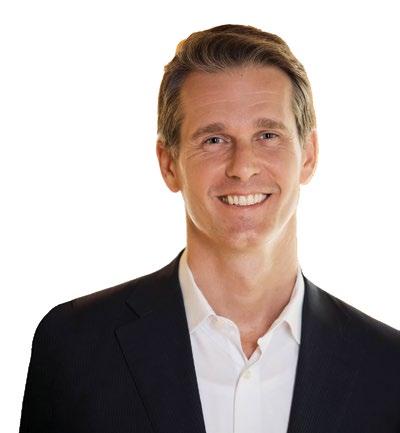
MARCH 2024 17 Andrew Charlton MP MEMBER FOR PARRAMATTA MAY YOUR LIFE ALWAYS BE FILLED WITH THE COLOURS OF JOY AND HAPPINESS. HAPPY ADVERTISEMENT Authorised by Andrew Charlton, ALP, 1/25 Smith Street Parramatta NSW 2150. 1/25 Smith Street, Parramatta 2150 PO Box 395, Parramatta NSW 2124 (02) 9689 1455 Andrew.Charlton.MP@aph.gov.au DrAndrewCharlton www.andrewcharlton.com.au

'GROWTH, HOPE, STABILITY AND PREDICTABILITY’
The recently arrived High Commissioner of India to Australia, GOPAL BAGLAY sat down for a chat with PAWAN LUTHRA
High Commissioner, you've been in Canberra just over a month and you’ve already visited Perth, Melbourne and Sydney. What have you learnt about Australia that you didn't know before?
Well, I know it's a very friendly country and it's a vast continent. What I have come to feel first hand in my stay of just over a month here, is the enormous amount of enthusiasm for the AustraliaIndia relationship, the deep appreciation of Indian culture, and the tremendous goodwill and good words for the Indian diaspora here.
That’s wonderful. High Commissioner, you joined the Foreign Service in 1992, just as Russia was opening up. Since then we’ve had 9/11, the rise and rise of China, and the emergence of young India. But we are currently grappling with violent conflicts, security threats and other energy shocks. What do you see as challenges for today's diplomats, particularly Indian diplomats? The challenges have varied as you rightly said, in the 30-odd years that I have been in the diplomatic service. First of all, it's been a great privilege for me to be an Indian diplomat and represent India, and
now, of course, to represent India as High Commissioner in Australia. It is also a great opportunity. Over the past 30 years, the profile of India has underg one tremendous transformation. When I joined the Service, India had just launched its economic reforms after, I would say, very grave economic crises and difficulty. You would all recall 1991. When you look at today's India, it seems difficult to even visualise that at some point India would have gone through that. So obviously, the two changes which I have seen, which are most important in the responsibilities of Indian diplomats abroad are: one, the primacy of economic
diplomacy, (which comes) with the growth of India as an economy - now we are the fifth largest, going to be the third largest, more than three trillion-dollar economy; and two, the Indian diaspora, which is everywhere in the world including in Australia, a million and more. So, the responsibility is to work very actively to forge economic partnerships with countries all over the world for trade, for investment, for technology, for greater connectivity. And secondly, (with respect to) the primacy accorded to serving the diaspora abroad, forging those links with the diaspora and sustaining them.
And these changes, mind you, have come
18 MARCH 2024 www.indianlink.com.au SPECIAL FEATURE
at a time when the world is going through unprecedented changes. There are disruptions because of COVID, and the general situation in the world, and there have been disruptions in the economy. But these 30 years have seen India's rise in an unprecedented manner - our connecting back to our roots, our heritage, and giving the message to the world of growth, of hope, of stability, of predictability, and the fact that India stands not only for itself and its people, but for the global good. And that is a great strength for the Indian diplomats today, that India is recognised not only as the largest democracy, a rising economic power, but the mother of all democracy - a great civilization with which everybody wants to have good relations.
High Commissioner, pundits are calling this century China’s century and pinpointing the South China Sea as a potential flashpoint. Australia and India are working closely in the QUAD alliance. The Foreign Minister Jaishankar has used the word ‘multipolar’ to describe the reality of the world we live in. How can the bilateral relationship between Australia and India manage the growing challenges from China in our respective parts of the Indian Ocean?
Pawanji, I haven't heard of any pundit calling this century China's century. Of course, people have said that this is Asia's century. And when we speak of Asia, we speak of many countries, just not any one particular country. And increasingly now, it's not just Asia or Asia-Pacific, it is Indo-Pacific. You mentioned Australia and India, and you mentioned External Affairs Minister Dr. Jaishankar's reference to multipolarity. Today's world, as I said, is passing through unprecedented challenges. When it comes to Australia and India, we are both multicultural societies, diverse democracies. We have a lot of similarities. Of course, there are differences in terms of the size of the continent or the demography. But our challenges are very similar. But even more importantly, our vision is a shared vision. And what we believe in, is an open and free Indo-Pacific, which is inclusive, resilient, sustainable, and prosperous. And for that, as two large countries in this region, we cooperate very closely. And our cooperation, whether bilaterally or at any other fora in the world, including the QUAD, is not directed against anyone. Instead, we see it as a vehicle for global good.
As a precursor to the Comprehensive Economic Cooperation Agreement
(CECA), ECTA came into force amidst great fanfare about 14 months ago. But there is a perception that the momentum is slowing down. In fact, India's attention has shifted to an FTA with the UK, which is but natural. What is your read on this?
Well, I will let the figures and facts speak for themselves. Both our Trade Ministers have written articles after the first anniversary of ECTA on 29 December last year: both of them referred to the gains to both countries. So ECTA is a perfect example of a winwin outcome for both. In this period from December 2022 to December 2023, exports of both countries to each other have grown. There is increased access for Indian goods to the Australian market. There is increased access also to certain Australian goods to the Indian market. Some Australian products which were unknown in India a few years ago, are now becoming more and more popular. So, this is an achievement which has benefited the people, and the economies of both countries, particularly at this time when, as I mentioned, the global scenario is not of certainty and predictability in economic terms also. So, this is an achievement on which both sides are very keen to build on. Regarding CECA, as you would know, discussions and negotiations are going on. These negotiations sometimes deal with very specific matters which pertain to technicalities and so take a bit of a time because lot of stakeholders have to be consulted in both the countries. It is not a question in my view of our discussions or negotiations on similar arrangements with any other country slowing down any other process; that doesn't happen, because we have vast experience in having FTAs with many countries of the world. And in fact, I was the High Commissioner to Sri Lanka before coming to Australia. And if I recall correctly, in the late nineties, the Sri Lankan FTA was the first that India had with any country. So, these things are not really directly related to one another or to each other. We continue to remain engaged as governments and we also engage with industry. Our hope is that CECA discussions will continue to move forward.
High Commissioner, you have used the word diaspora a few times today, and in your speeches recently. It's a term with regards to the India-Australia relationship that has been bandied around quite a bit after Peter Varghese used it in his work An Indian Economic Strategy. I'm aware that you have

personally shown an interest in writing to the Indian-Australians who were awarded honours on Australia Day this year, perhaps one of the first High Commissioners to do so. Can you share with us what the Indian Consulates and the High Commission are planning to do to harness the strength of the local diaspora?
As you know, Pawanji, the number of Indian diaspora is put around a million or more in Australia, which is a significant number, both in terms of its absolute nature. One million is a strong number anywhere, but also in the context of the demography that this vast continent has. Our first priority, as I have repeatedly said, is to deliver the services that our people require anywhere in the world, whether it is consular passport services or coming to the assistance of our compatriots when they are in need some emergency situation or difficulties. You have seen how various evacuation exercises have taken place. Australia has not seen some of those tensions, luckily, but of course we needed to operate the Vande Bharat flights in the COVID situation. So, delivery to the people is very important as the first priority of the High Commission and the consulates, and to deliver these services in an effective and timely manner to our compatriots and people of Indian origin. The diaspora is a strength to the community and to the country they live in, and also in terms of their linkages with India. It's a two-way bridge and as I said earlier part, I’m very heartened to see the reactions and the assessment and appreciation from the Australian officials about the contribution (our) diaspora has made.
You refer to the awardees of various honours, and the recognition of the work of Indian origin people. What it means to me as a newly arrived high commissioner here, is that they are not making a mark just for themselves or their communities, but they are contributing to the larger Australian community, in a diverse array of activities, which benefit specific sections or wider sections of the community. So, their experience as well as the experience of all of you, is something which we intend to bring into our conversations, whether it is economy, investment, sports, culture, and in every activity the Indian diaspora is contributing in Australia. And these are also the spheres where India and Australia are poised to build a stronger partnership. So, it is quite logical that we look forward to contribution from diaspora in strengthening Australia-India relations as well.
In a recent interview, the Australian High Commissioner to India Philip Green shared his personal aspiration as having defense personnel in both countries working seamlessly in each other’s joint headquarters. I'm aware that it is very early in your tenure here, but what is one personal aspiration you would like to aim for during your tenure?
Well, as you said, it is very early in my tenure. What you asked is a very deep question. It requires deliberation. But since you have put me on the spot…There are two things. One is there is tremendous trust between India and Australia right now at all levels. There is a lot of positivity and energy for this relationship in both countries. I would naturally like this to grow, and this positivity and this trust to contribute to the relationship. Second, the economic relationship is important, and the relationship between people. I would say that in this world where supply chains have got disrupted, if in the critical areas like renewable energy, maritime safety and security, if India and Australia can build a stronger partnership both bilaterally and contribute to the region, that will contribute to the benefit of our respective smaller neighbours in the Indian Ocean and the Pacific Ocean, to the Indo Pacific at large. I think these two areas will be very important. Under QUAD also we have these initiatives for health, for clean energy initiatives, for infrastructure. So, I would think that perhaps the respective strengths which India and Australia have, they can come together for the benefit of the two countries in these areas, clean energy and maritime security. Just not for themselves, but for the whole region.
Fantastic. High Commissioner, thank you for your time today and perhaps we can chat again in a few months as you get your feet on the ground. I'm a very grounded person. I will retain my feet on the ground, don't worry about it. Good to talk to you.

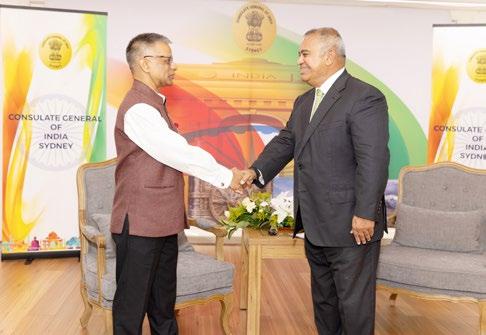
MARCH 2024 19
Use this QR code to watch the interview on your phone
Photo: Vishaal Kumar
ARTS

Inking resilience
Tribal tattoo artist Mangala Bai Maravi and her aide Amit Arjel give us an exclusive preview to their giant artworks created for the Biennale of Sydney
Icome from Dhindori in Madhya Pradesh, India. I bring with me the tribal Indian tattoo art of the Baiga tribe. Our term for tattoos is Godana. Baiga tribal women flaunt it across their bodies – covering almost 80-90% of their skin from the forehead to the legs, barring the lower abdominal area. It was like an identification mark in the old days: those who didn’t have these tattoos were not considered a part of the Tribe.
Tattooing has been my family profession. My forefathers, from four generations before me, have all been professional tattooists. Like how Gond tribesmen are farmers, or Pandits are into reading the holy scriptures, our community is skilled in tattoo art; we make tattoos for other tribes.
There’s an interesting story behind how we became tattooists. What I have heard from the elders of our community is that the Baigas were the first people to sport tattoos on their bodies. It began in prehistoric times, when people wore no clothes. A severe drought once hit the land, forcing Naga Baiga (the King of the Baigas) and Naga Baigin (the Queen) to approach Lord Shiva and Goddess Parvati. They pleaded to have mercy on them and shower some rain, else the drought would destroy them all. Lord Shiva responded, “Go to Lord Indra, the God of Rain; he is the only one who can help.” Naga Baigin looked down at her form and lamented, “How can I approach Lord Indra in this nakedness? The gatekeepers at Lord Indra’s court will shoo me away. Please help me adorn my entire body.” Thereafter, Lord Shiva and Lord Parvati created Badi and Badnin, the Tattooist Tribe, and asked them to beautify Naga Baiga and Baigin, so that they could impress Lord Indra.
Our designs have since evolved to reflect various objects and structures. There is Gadhi (fortlet), Jhela (a bouquet of flowers), Chakmak (spark), Khumni, Diya (oil lamp), Dauri (woodfire), Madhumakkhi Chatta (honeycomb), Sagar (seas), among others. Most of these designs are inspired from daily lives and our immediate environment.
The design of Chulha (stove) is a significant one for Baiga women. The Baigas believe that the stove should always be burning in their

homes, visitors should be fed well, so that they as a tribe are never left famished.
Our tattoos have now moved from the skin on to the canvas. My mother, the late Shanti Bai Maravi, was the first to make this move. I was very young when my family was befriended by a gentleman named Bansant Nirguni, who was associated with Bharat Bhavan and other government-led Museums in Bhopal. He encouraged my mother. He said, you’ve worked very hard tattooing the tribeswhat will you do when people move away from tattoos? How will you sustain yourselves?
Indeed, he was farsighted. In this day and age, the artform is disappearing because people, even from the tribes, don’t want to get it done anymore. Tattooing begins at the age of 8 or 9 years for Baiga girls. The first thing they get made is the Chulha motif on their forehead, which includes design of grains, and woodfire. These days, who cooks on traditional woodfire? Most people have gas cylinders and modern stoves. Therefore, they are not getting it done as much as in the past.
Painting these designs on canvas is much more tedious because we layer the designs twice. On average, a single canvas painting made of acrylic paint takes me somewhere between 12-15 days.
For tattoos, I make my own kajal (ink/ kohl) from scratch. In the early days, I’ve seen the use of woodfire. We would collect the soot from the smoke and make kohl.
As a kid, I was taught to use thorns from a plant called Ram Baas to hand-poke - they were sturdy, and so made wonderful little tattoo needles! Now we use actual needles that are universally available. Our technique for making kohl has also changed a bit - we use ramtila (niger seeds).
I started Godana as a profession quite early. My three older sisters would tend the family home while my parents went out to work, taking me with them as I was the baby. At around 7 years of age, I told my parents I would like to try the art myself. Mum would draw the lines and I would use the needle. She’d say “Make sure you do it properly.”
When she’d wash off and check, she’d say, “That’s not bad.” And that’s how I learned.

I was always very determined, even as a child.
Later, my father would create the designs and I would tattoo them on the women of the tribe.
I don’t have many tattoos on my own body. My people don’t have them: if we start doing it on our own bodies, then how will we differentiate from other tribes.
People ask me if I’d like to take this artform from canvas to digital. There is little that I can do, though. I am not educated so I don’t really understand how to navigate in this digital world. My parents have faced a lot of hardships. They would travel from one village to the other, making a living out of tattooing tribes. So as a child I would always think that when I earn, I’ll keep some money for my needs and the rest I’ll give to my parents and my family. It's getting difficult day by day, but what can one do. Now look at Amit Bhai. He learned the art from Mum and has taken this further. And now we as brother and sister do this work. It feels great. Plus, my mother would say, “Amit, take care of Mangala,” so he takes good care of me, and is helping me take this artform on international platforms.
We are doing our bit to save this artform. After me, my nieces will learn this art, which is great. There are many others who are learning. I am also teaching them. Just because it’s a family tradition, that doesn’t mean I won’t teach others. I am helping others learn and take this legacy forward so that this artform doesn’t disappear.
Sydney is my first ever overseas trip. I am loving it. I am also missing my home, my village, but mostly I’m missing a good cup of chai. As told to Torsha Sen


AMIT ARJEL
Taking it forward
I am a contemporary artist with an interest in tattoos. As a tribal man myself, I’ve spent the last decade researching tribal tattoo culture. I have tried through whatever little means I have, to preserve this art. Some 7-8 years ago, I got to know about the Baiga tattoo culture and I found Shanti Bai Maravi, who was a pioneer in this artform. I was lucky to have got an opportunity to learn from her and help Mangala. I promote Mangala’s work in every possible way and in places where she cannot get to. I also teach other people this art and make tattoos.
The Sydney Biennale was prompted by a conversation with a friend who stumbled upon my work on Instagram. Intrigued by my projects with Managla, he initiated a discussion about Indian tribal cultures, eventually mentioning a colleague based in Sydney who might share our interests. He praised Mangala’s work and that’s how the discussion began.
The Sydney Biennale is a great opportunity for Mangala. In fact, not just her alone, but the tribal people who can get inspired by her courage and resilience. You know, being a female from the tribe, to show the courage to come all the way to Sydney, this is a huge achievement.
For the Biennale we have created two large works. One is a 10-feet wide and 15-feet long artwork of the Baiga Tattoo, made on canvas with acrylic medium. The second one is on paper, 5 feet wide and 9 feet long. It was a very slow process because the Kuro Sumi ink takes time to dry.
The works of Mangala Bai Maravi and Amit Arjel are displayed at the Chau Chak Wing Museum at University of Sydney, and at White Bay Power Station as part of the 24th Biennale of Sydney. Details at https://www.biennaleofsydney.art
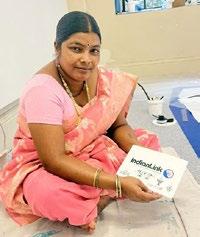
MARCH 2024 21
Use this QR code to watch the interview on your phone
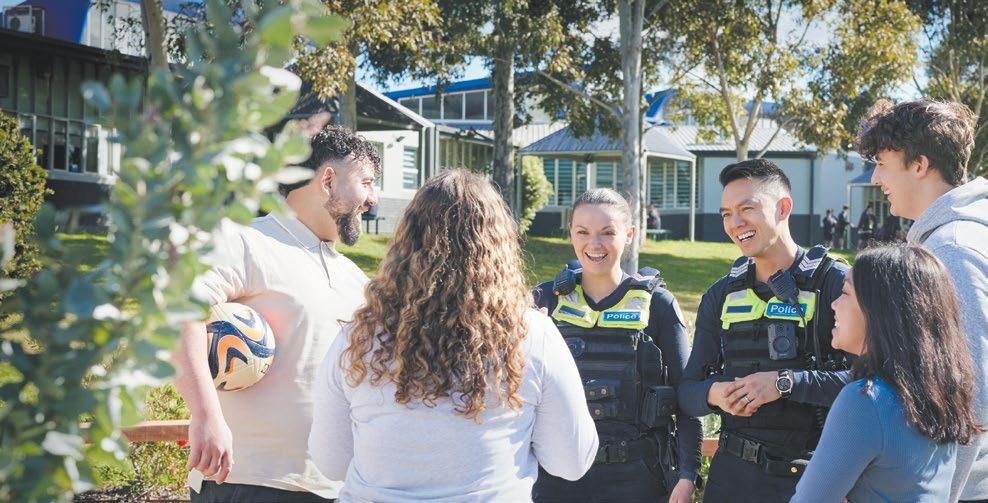




22 MARCH 2024 www.indianlink.com.au VIRDI ENGINEERS ROOF RESTORATION Professional advice at the lowest price Serving the community for over 20 years Lic. No. 114274C Pay in easy interest free installments* *Conditions apply. Limited period only. Contact Harjit today! Call: 0412 254 015 Fax: (02) 9920 1044 web: virdiengineers.com.au Roof restoration Guttering solutions Whirly birds Driveway cleaning & painting Fencing & retaining walls Skylights Sunrooms Leaf guards Carports, decks, patios & pergolas


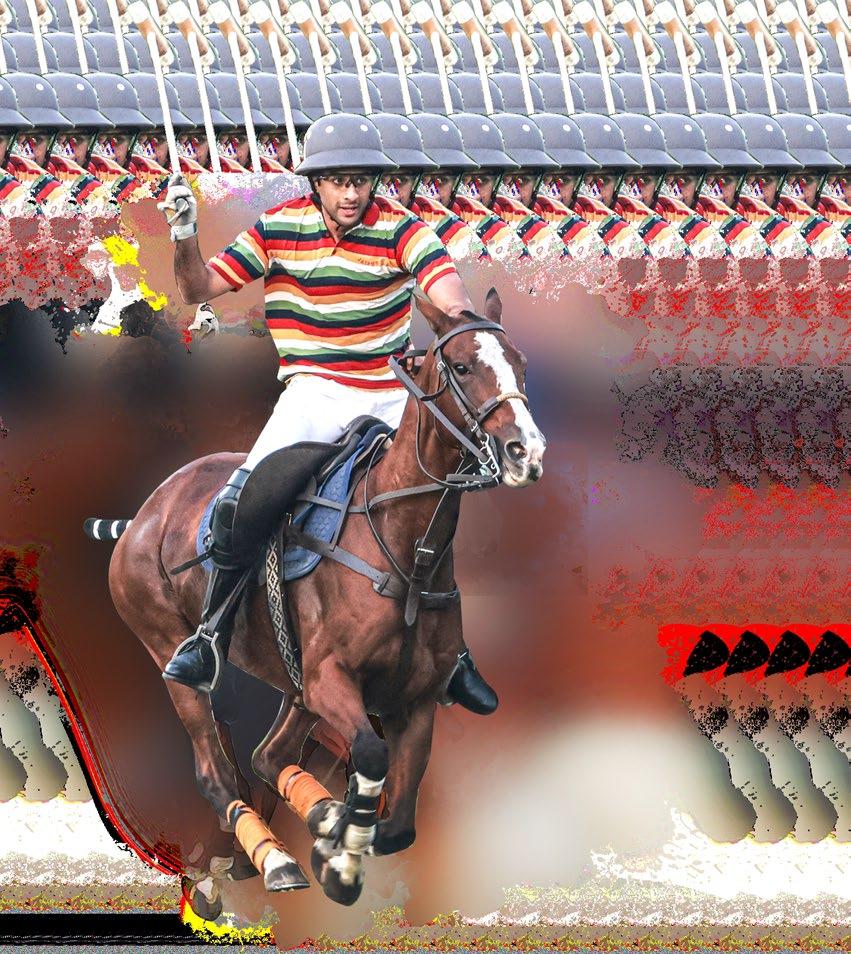
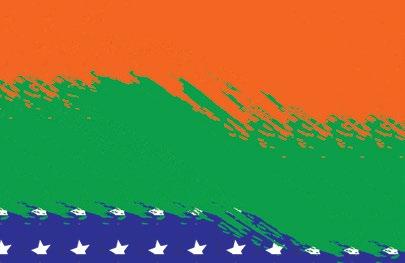





MARCH 2024 23
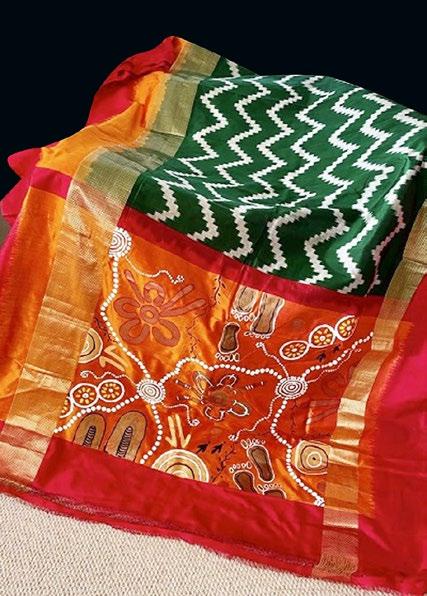
The new range at South Asian label Saree Selections is based on Aboriginal artist Presten Warren’s designs.
RAJNI ANAND LUTHRA and NADINE SILVA report
24
-year-old Aboriginal artist Presten Warren had not seen a sari up close until last year.
Today, his designs appear on a sari range created by Australia-based South Asian label Saree Selections - the first line of which has all sold out.
“I am overwhelmingly proud to know I was approached to collaborate on such a special blend of culture, art and fashion,” the award-winning artist and Wirangu/ Dieri/Kokotha/Mirning man of the ocean and desert tribes, told Indian Link.
“I understand how significant and meaningful saris are to Indian women, and to feature something I created on these traditional garments, is really quite surreal.”
The Sydney-based founders of the label Saree Selections, Shivanie Dheeraj and Dheeraj Kumar Machinella, were themselves drawn to Aboriginal art and culture only recently.
“We observed a growing awareness of - and respect for - Traditional Owners at our day jobs in the government sector,” Shivanie Dheeraj revealed. “That gave us inspiration.We thought, Aboriginal art has never been on a sari.”
Shivanie, who was born and raised in Sri Lanka, co-founded the label with her Indian husband in 2022.
“We are very proud and privileged to have Presten Warren involved in our project,” she told Indian Link.
Saree Selections has now collaborated with

Aboriginal artworks on your sari
Presten on at least 30 limited edition pieces.
“We signed contracts with him for his artwork, and the royalties go to him for every sari we sell,” Shivanie said.
Saris with Presten’s Aboriginal designs are produced in India - first woven from pure handloom silk, and then finished off with a gold zari border in the Pochampalli style.
A second line of saris, digitally printed and therefore slightly lower priced, is designed in Australia but made in India, printed on a variety of fabrics including premium American georgette, heritage handloom fabric, and Gajji silk.
With their bright colours and eye-catching designs, both the handloom and digital prints would win you compliments at a
cocktail event as well as a formal event where traditional attire is the dress code.
The collaboration has not only been commercially successful, it has also been an exercise in cultural awareness for both parties.
“It’s true I only had a very limited knowledge of the Indian sari until recently, just what I had seen in movies,” the South Australia-based award-winning artist Presten said. He now observes the designs when he sees Indian women out in public, especially when he travels to the cities. “I love seeing the amazing patterns and different colours representing different Indian cultures and families. I think it is such a beautiful concept. I can tell it’s a special tradition and very important to Indian women

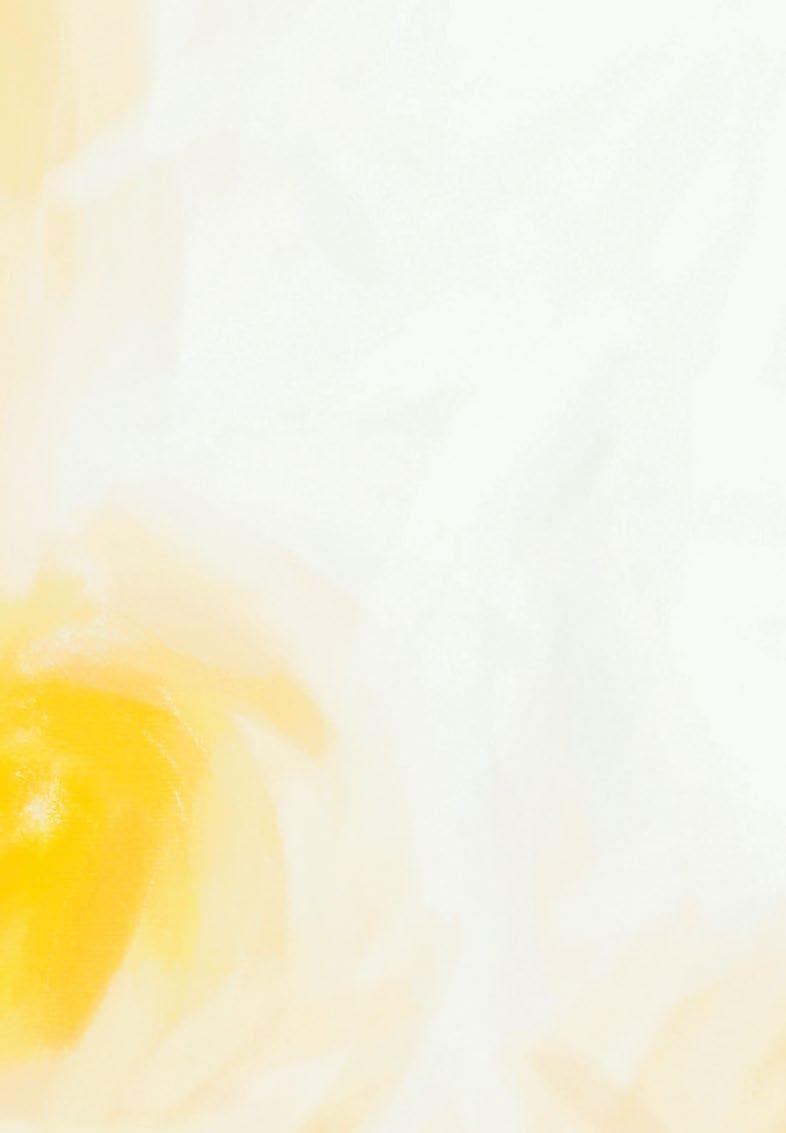
and that the designs and colours are just stunning!”
Shivanie admitted, for her part,“I’m still learning, to be honest. Aboriginal art is protected, and they call their own community a Country, so each Country has their own symbols to depict nature and their environment. No two Countries can represent the same artwork. It’s unique.”
Presten Warren is particularly touched about the date set for the launch last year.
“It means a lot to me that Shivanie chose to launch the limited edition range in honour of Reconciliation Week, and in support of the YES23 campaign.”
The launch took place at the Community Migrant Resource Centre in Sydney.

SPECIAL FEATURE
Dheeraj and Shivanie Presten Warren

artworks sari
Presten's work has previously been licensed by BHP for staff uniforms. That design came from his piece ‘Camping Under the Stars’, for which he won the 2023 Kokatha/Carrapateena PPE Art Competition. It is a statement about respect for the environment, sustainability, communication and the importance of sharing resources.
An altered version of the piece can now be seen on a Shivanie sari, with colours changed “so it came across more feminine and gentle to the eye,” Presten revealed.
Describing the artwork, he said, “The campsite is an experience of connection between people (who gather around a crackling fire and share stories, songs and laughter); but it is also one of people connecting with nature (as they smell the earth and gaze upon the stars above, in serenity and tranquillity).”
Despite its success, Shivanie said ‘Camping Under the Stars’ isn’t her favourite Presten Warren work.
A design he produced in the lead-up to the 2023 Referendum on an Aboriginal and Torres Strait Islander Voice stole her heart. “We asked him if he could paint something that comes to his mind when he thinks of the Yes Campaign,” she said.“That work is very close to my heart because he wanted to communicate what it means to him.”
What’s in the future for this exciting new collab?
Projects are in the pipeline for Aboriginal designs on scarves and pocket squares, and of course, plenty more in saris.
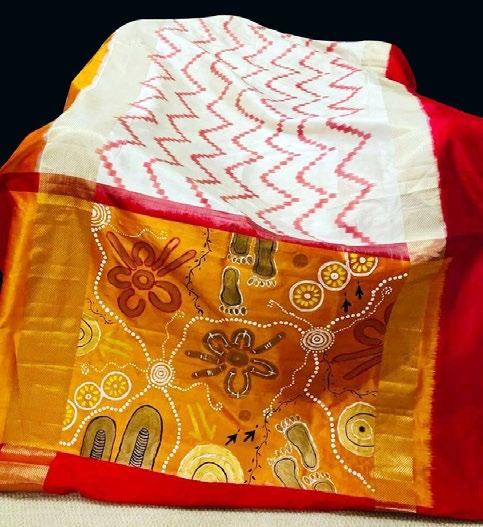

“I understand how significant and meaningful saris are to Indian women, and to feature something I created on these traditional garments, is really quite surreal.”
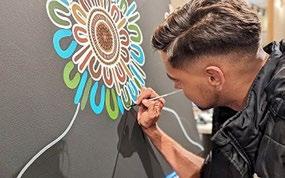

"COASTLINE"
… along the coastline… the intricate patterns of the waves (in) their constant ebb and flow, create a soothing rhythm that fills the air with a sense of calm. The shoreline is dotted with rocks and boulders, some smooth and rounded from years of being lapped by the ocean’s waves. (Then you notice) evidence of the Aboriginal peoples who have called this place home for countless generations. Intricate carvings and paintings adorn the rocks and caves, a testament to the deep spiritual and cultural significance this place holds for the First Nations people.
Presten Warren
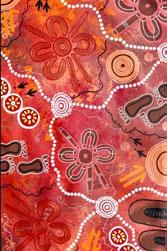
"CAMPING UNDER THE STARS"
The campsite is an experience of connection between people (who gather around a crackling fire and share stories, songs and laughter); but it is also one of connecting with nature (as they smell the earth and gaze upon the stars above, in a moment of serenity and tranquility).
Presten Warren

"VOICE OF TRADITIONAL OWNERS"
Our commitment to time-honoured traditions has sustained the natural beauty of this land, creating a thriving environment. This work stands as a testament to those who have tirelessly defended our homeland. Our voices deserve recognition and respect.
Presten Warren

MARCH 2024 25
Shivanie with guest at the launch last year
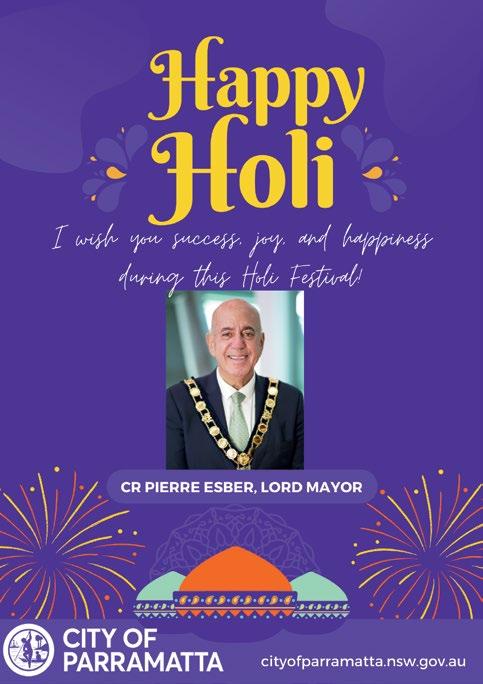


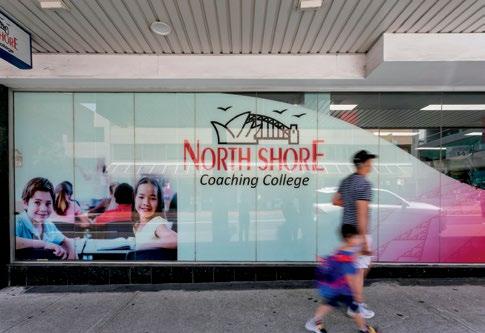


26 MARCH 2024 www.indianlink.com.au Authorised by M.Vamvakinou, Australian Labor Party, Level 2, Office 1, 14 Dimboola Road, Broadmeadows VIC 3047 YOUR FEDERAL MEMBER FOR CALWELL Town Hall Broadmeadows Precinct, Level 2, Office 1, 14 Dimboola Road, Broadmeadows VIC 3047 9367 5216 Canberra: 02 6277 4249 maria.vamvakinou.mp@aph.gov.au MariaVamvakinou mariavamvakinou.com Join one of Australia s leading coaching colleges offering tutoring for students from 3 – 18 years old Established for over 30 years with over 65 + campuses in Australia and Hong Kong Inv ting individuals passionate about education to join our dynamic and innovative organisation Existing and New Locations in growth areas are available Comprehensive training and ongoing support provided Established Enrolment Administration System Student and Teacher Portal and training to support your operations FRANCHISE OPPORTUNITY IN EDUCATION www north-shore com au For an obligation-free meeting please call 0411 388 868 Run your own business – be your own boss Run your own business – be your own boss
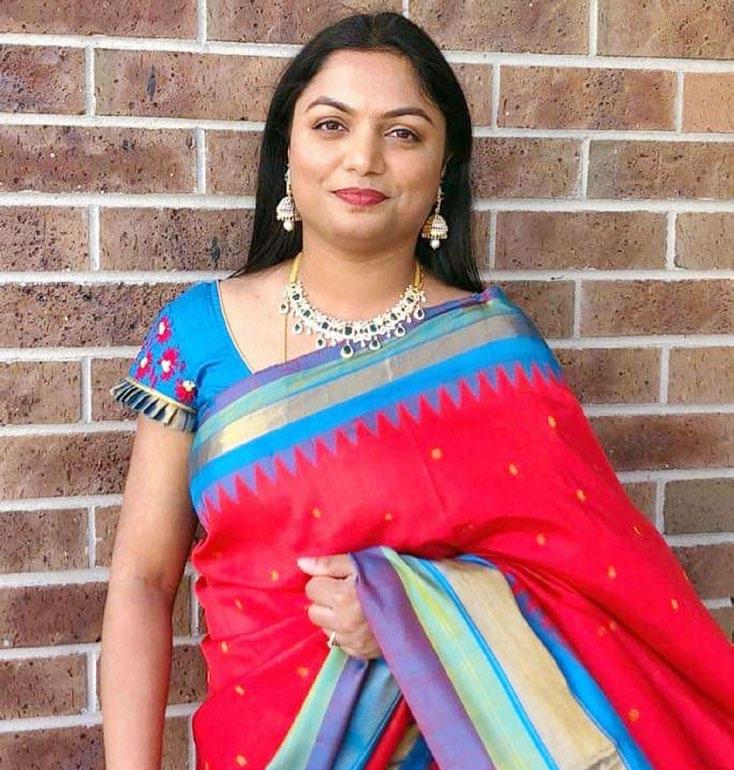
She was outgoing, he was an introvert
Cloud
of gloom in Melbourne’s Point Cook community, where Chaithanya ‘Swetha’ Madhagani lived, and allegedly died.
 ABY FRANKEY GERARD FERNANDES
ABY FRANKEY GERARD FERNANDES
clearer picture is emerging of 36-year-old Chaithanya ‘Swetha’ Madhagani, the young Melbourne mum whose body was found in a wheelie bin early this month. From photos and descriptions of those who knew her, it appears she loved life and living it with grace and positivity.
Prabha Agraja, an active member of the local Telugu family of which Chaithanya was a part, told Indian Link she was a devoted mum and homemaker who often shared food and recipes with neighbours and was keen to get an online neighbourhood community going.
“She was always impeccably dressed –her social media posts showed her penchant for saris,” he said. “She called her collection “Swetha’s Closet” and supported handloom saris and backed the weavers who made them with love and care.”
The needle of suspicion is on her husband, Ashok Raj Varikuppala, who some reports claim, travelled to Hyderabad in
India along with his four-year-old son after allegedly committing the crime, and has reportedly called Victoria Police to confess.
He worked at the nearby Coles Express in Sanctuary Lakes Shopping Centre, and acquaintances claim he was an introvert.
Local Members Jason Wood and Mathew Hilakari, and Mayor of Wyndham City Jennie Barrera put out notices of
condolence. A friend of the couple and active community member Raja Ramesh Reddy took to Facebook to say, “The news of Chaithanya (Swetha) garu’s passing is truly devastating. I had a conversation with her just last weekend at Ready Steady Go, where we discussed our kids’ activities. I am in disbelief over this news. Her sudden departure has left us all in shock. Our hearts go out to her family and the little one during this difficult time. It’s imperative that justice is served and those responsible for this are swiftly held accountable and brought to justice. We pray for strength to her family in these tough times”.
Raja has been in touch with Swetha’s family back in India, where the news of the death has been reported widely.
According to NDTV in India, the local member of parliament in Uppal (eastern Telangana) where Swetha’s family lives, Bandari Lakshma Reddy, has contacted the grieving parents.
He has also contacted the Foreign Office to bring Swetha’s body back to Hyderabad.
Meanwhile, Labour Day long weekend in Victoria was a quiet one in the West of Melbourne. A cloud of gloom prevailed in Point Cook especially, a suburb popular with Indian settlers where Swetha lived, and allegedly died. Her body was found dumped in a wheelie bin some 80 kilometres away from her home in Saltwater Coast.
Sudhir Juneja from the Point Cook Indian Community, Melbourne Facebook group wrote, “We remember our local community member Chaithanya Madhagani (Swetha). Extremely sad news from Point Cook, we truly wish we could turn back the clock and help her somewhere. May God bless this departed soul.”
Navjeet Kaur commented, “A tragic loss of life, taken before its time. A loving mother with a passion for capturing life’s moments, we hope that justice will be served and your soul will rest in peace. Your memory will live on in the hearts of your loved ones.”
Swetha probably breathed her last at a time when communities across Melbourne, and indeed the world, were marking International Women’s Day, and calling for increased rights, primary among them safety and security. Her death shows that such safety eludes many women even in their own homes.
Prabha Agraja commented, “Domestic violence is not just about the safety of women, it’s about the well-being of families and the crimes that are often planned behind closed doors. It’s crucial to approach these situations with empathy and understanding. Let’s use social media as a platform to support each other’s mental health and well-being … let’s strive to understand the complexities of these situations and offer support where it’s truly needed.”
He spoke for the rest of his community when he added, “Swetha you will be remembered forever, maa. Rest in Peace.”
Swetha probably breathed her last at a time when communities across Melbourne, and indeed the world, were marking International Women’s Day, and calling for increased rights, primary among them safety and security. Her death shows that such safety eludes many women even in their own homes.
MARCH 2024 27 COMMUNITY
Chaithanya ‘Swetha’ Madhagani
Source: Facebook
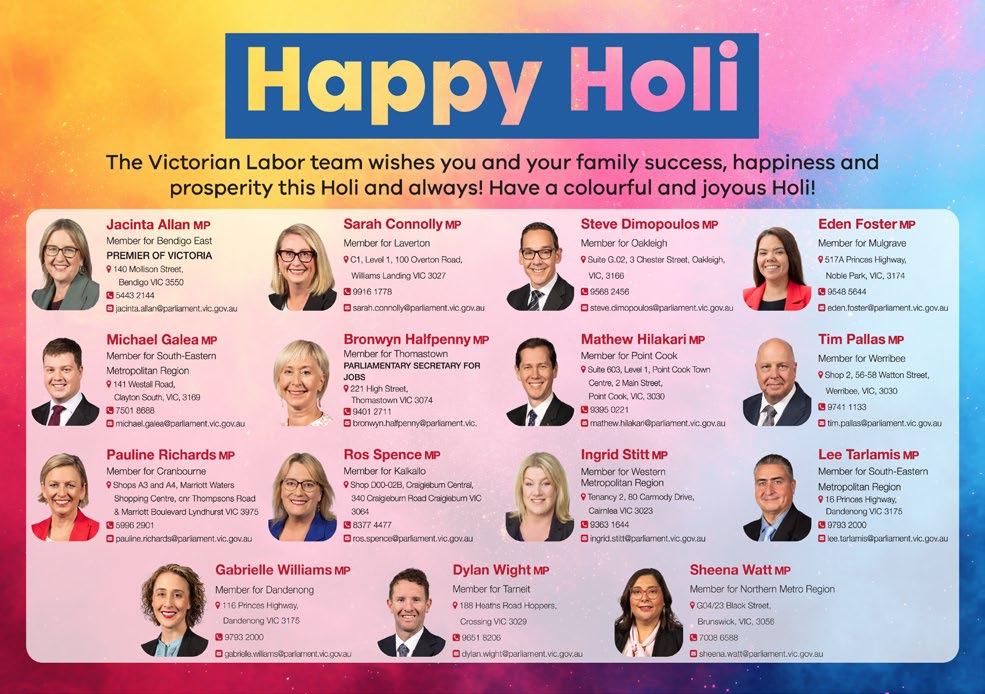
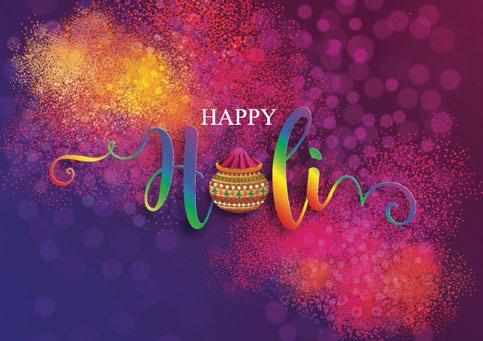



28 MARCH 2024 www.indianlink.com.au

‘
Writing is both enjoyable and tormenting’
A sneak peak inside Tamil writer Perumal Murugan’s life and works
 T“BY D r SHARON RUNDLE
T“BY D r SHARON RUNDLE
he writing process, for me, is both enjoyable and tormenting,” Tamil writer Perumal Murugan said in Sydney recently.
His statement revealed much about his extraordinary literary life, which has seen his book withdrawn, burnings, a selfimposed exile, and a longlist spot on the International Booker Prize.
Murugan was talking to writer and academic Dr Roanna Gonsalves, at a University of New South Wales event this month. Their conversation on stage took place through an interpreter at a packed Io Myers Studio.
Murugan’s books written in the Tamil language are available in English translation. He is a best-selling author and recipient of two National Book Awards. His work includes novels, collections of short stories and poetry, as well as non-fiction books. He is a Professor of Tamil literature and Vice President of PEN International. This is his first visit to Australia.
Dr Gonsalves quickly established a rapport with Murugan. He responded warmly and generously to her pertinent questions about his novel Pyre which was long listed for the 2023 International Booker Prize.

He spoke also about his novel One Part Woman which caused an uproar in India, the court case and judgement that followed, as well as his thoughts on the caste system and its implications both in the past and in the present.
Murugan explained how writing fiction gives him freedom to portray a deeper understanding of the human condition.
“I write about the movement of people, and different castes mixing in society.”
He spoke about the difference between city people and people who live in small villages, and how difficult it can be for them to accept and trust each other.
In his novel Pyre, Saroja from the city and

Kumaresan from a small Tamil village fall in love and elope. When Saroja accompanies Kumaresan to his village as his wife, the people there suspect that she is from a different caste.
“Kumaresan tells her very clearly to not say anything about her caste, and that he would handle those queries,” Murugan outlined. “But now even he struggled in the face of such questions. How much worse would things get?”
Kumaresan’s widowed mother Marayi, whose heart has been broken by her son’s decision and who speaks to imaginary people to express her displeasure, refuses to accept her daughter-in-law. Saroja lives
in fear realising that she “would have to live through this unending torment”. Then things do indeed get far worse.
Murugan’s ability to reveal the inner lives of his characters means readers are able to apperceive what his characters are thinking and experiencing. Since he is from a rural village in Tamil Nadu, he feels it is vital to highlight marginalised communities.
Writing about religion, caste and women can have significant repercussions. Three charges were brought for Murugan’s book One Part Woman: disrespect for religion, disrespect for caste, and disrespect for women. Published copies were burnt. This novel concerns a childless couple who visit a (fictional) temple dedicated to Vishnu and Parvati (hence the title) during the annual Chariot Festival so that the woman might conceive. Although the narrative is fiction, some Hindus found this implication based on oral folklore highly offensive. Murugan had to sign an agreement to withdraw his novel. This led Murugan to state, “The author is dead”. After that, Murugan declared that he would not write any more.
The case went to court to challenge the agreement and ask for it to be withdrawn. Two High Court judges gave their verdict that Murugan should continue to write. Fortunately for literature and his readers, Murugan took that as an order to return to writing. He has written three more books since that judgement.
Judging by the length of the queue of people waiting for Murugan to sign books, it was indeed a wise decision.
MARCH 2024 29 BOOKS
Photo: Maria Boyadgis, courtesy of UNSW
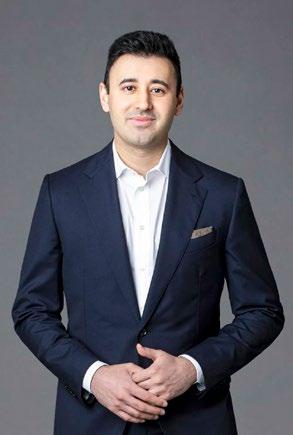


Sharma’s Kitchen wins Dairy Award for its Milk Badam
It’s the second win for the brand, following its popular Mango Lassi
 SBY VIVEK ASRI
SBY VIVEK ASRI
harma’s Kitchen product Milk
Badam has won an Australian Grand Dairy Award in the Flavoured Dairy Drink category.
The win marks a remarkable achievement for the brand which boasts household name status in Sydney’s Indian community.
Together with its previous win for its Mango Lassi in the same category a few years ago, this latest triumph underscores the essence of traditional flavours meeting contemporary excellence.
Akaash Sharma, Chief Operating Officer at Sharma’s Kitchen, says it’s gratifying to receive such recognition.
“Our products like Mango Lassi and Badam Milk are deeply rooted in Indian tradition, making them quite unique in the Australian market,” Mr Sharma told Indian Link. “So, when we earn accolades like these, it not only brings satisfaction but also fuels our motivation. We’re up against
big players like Dairy Farmers, so winning awards against them really solidifies our position.”
Sharma’s Kitchen traces its journey back to 1998, when the burgeoning Indian diaspora in Australia began seeking products that resonated with the tastes of home. While Indian cuisine was relatively accessible, it was the quintessential dairy
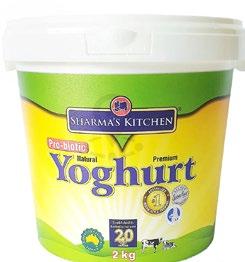

delights such as yoghurt (dahi) and paneer that evoked a sense of nostalgia among many.
It was a need Akaash’s dad Bipen Sharma identified, and jumped in to fulfil.
After years of experience in the restaurant industry, founder Bipen Sharma, lamenting the lack of good quality processed Indian dairy foods in Australia, knew he had to

“We’re up against big players like Dairy Farmers, so winning awards against them really solidifies our position.”
Akaash Sharma
make his own.
His first two products at Sharma’s Kitchen, the yoghurt and the paneer, flew off the shelves, and there was no looking back.
The Mango Lassi followed, forging the path for a variety of other flavoured drinks – almond, saffron, cardamom, and a unique date (khajoor) milk. The product range soon expanded to khoya, ghee, shrikhand and a line of desserts.
The Sharma’s Kitchen Almond (Badam) milk, unlike its more popular dairy-free namesake, is actually almonds cooked with milk. Rich and decadent, it is filled with the flavours of cardamom and saffron and rosewater. It is served chilled in summer and warm in winter. Protein-packed, it is considered a healthy and restorative drink.
Akaash Sharma says it’s his favourite product.
Source: Supplied
“We’ve received wonderful feedback for Milk Badam, and for our Mango Lassi,” he revealed. “Expanding our reach is one of our key objectives now. We’re currently in the process of setting up a new production facility. The next step would be to approach supermarkets like IGA, Harris Farm, and Woolworths to stock our products. This would give us direct access to a much wider market.”
Meanwhile his dad Bipen, buoyed by Australian success, has explored larger markets in Europe. Setting up a manufacturing base in Bulgaria in 2012, where he found easy access to good quality buffalo milk, his journey in innovation has opened up great new pastures.
A family-run business from the get go, Bipen has able lieutenants in his son and also his wife Umesh and daughter Tanisha.
The 25th edition of the Australian Grand Dairy Awards hosted by Dairy Australia and the Royal Agricultural Societies, took place in Melbourne this year. It celebrated excellence and innovation across 18 distinct dairy product classes. The panel of judges, comprising leading food and dairy experts, meticulously assessed 380 entries from various states, spanning cheese, ice cream, milk, yoghurt, butter, and gelato.
Among the standout winners of the evening, Victoria’s Berry’s Creek Gourmet Cheese Oak Blue clinched the coveted title of Grand Champion Cheese, while Queensland’s artisan gelato establishment Milani Minus Eight Degrees, was crowned as the Grand Champion Dairy for its Peanut Caramel Gelato.
The award-winning products, including Sharma’s Kitchen’s Milk Badam, will proudly showcase the blue and gold medal on their packaging, signifying excellence and distinction within the Australian dairy landscape.

30 MARCH 2024 www.indianlink.com.au ACCOLADES
Founder Bipen Sharma
Akaash Sharma
Creme de la creme: Siblings Akaash and Tanisha Sharma at the awards ceremony
Source: Supplied



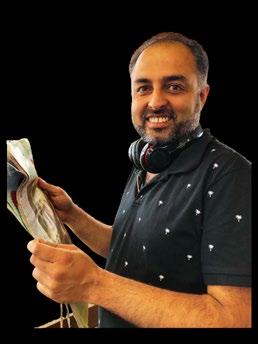

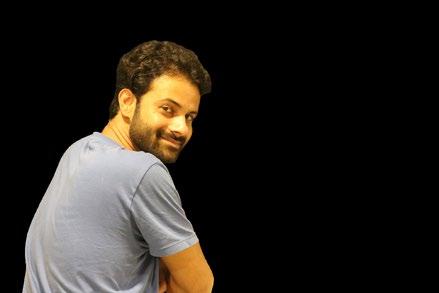







MARCH 2024 31 o a d t h e A p p or just say ‘Hey Google, play Indian Link Radio’ or ask Alexa Turn up the volume!!! 24/7!! Nonstop music Community News TOTAL MASTI! Ekdum cool RJs Spicy gupshup Contests ka Bhandaar! Welcom e to the Welcom e to the Welcom e to the Indian Link Radio family Indian Link Radio family Indian Link Radio family Ruk kyon gaye, guys? RJ Sagar RJ Meenakshi RJ Samay
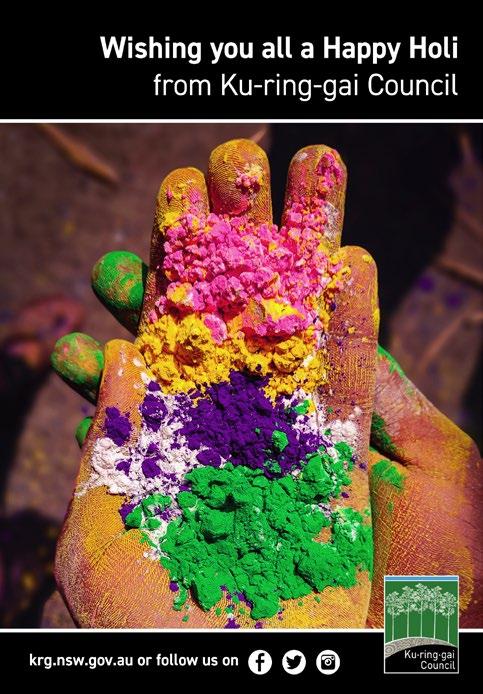
MATRIMONIALS
SEEKING GROOM
Indian origin, professionally qualified, issueless match (working professional, not self-employed) from Australia for ’88-born
5’3" Hindu Punjabi girl (divorced, issueless), working with a government organisation in Sydney. Must have Aus PR, be a non smoker, and preferably a teetotaler.
Email biodata with photos, parents‘ contact details to: matrimonial.ml@gmail.com.
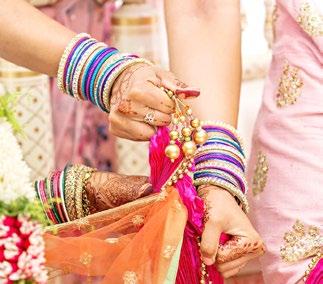



32 MARCH 2024 www.indianlink.com.au
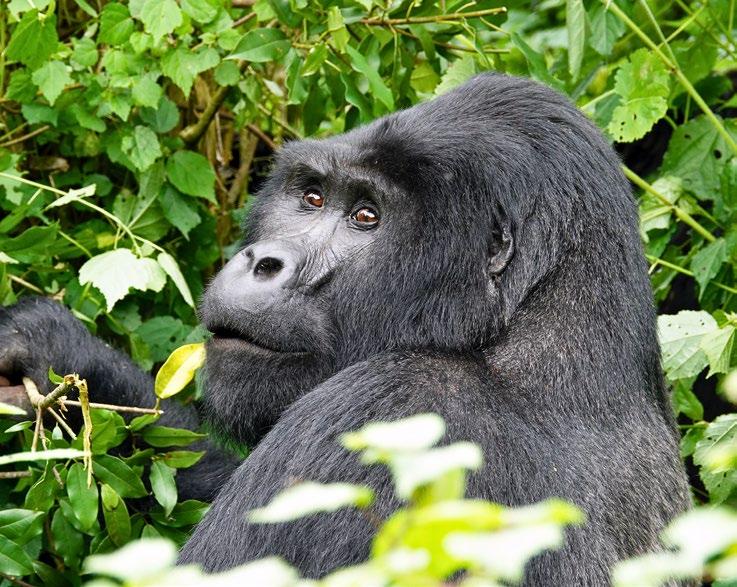
Primate Country

WGorilla trekking in Uganda, the ‘Pearl of Africa’
BY RITAM MITRA
inston Churchill famously wrote of Uganda, “For magnificence, for variety of form and colour, for profusion of brilliant life – bird, insect, reptile, beast –for vast scale – Uganda is truly ‘the Pearl of Africa’”.
Though the slogan was coined before Churchill, his words still ring true today. I arrive in Entebbe, Uganda’s secondlargest city, in the company of two friends. We’ve devised a packed 5-day itinerary with a local tour company, and there are countless highlights before us: walking alongside white rhinos at Ziwa Rhino
TRAVEL NOTEBOOK
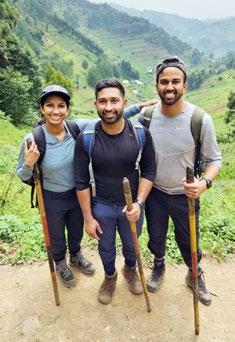
How to get there Fly direct to Entebbe via Doha, which is a direct flight from most Australian cities. From there, it’s a 9-hour drive to Bwindi Impenetrable Forest, but there’s plenty to see along the way. It’s best to go through one of the many reliable and responsive Ugandan tour operators.
What to do Other than Bwindi and Kibale, be sure to visit Ziwa Rhino Sanctuary, Murchison Falls National Park and Lake Bunyoni. Also consider Jinja – the adventure capital of East Africa.
When to go It’s best to visit during the dry seasons – June to September, or December to January.
The dollars and cents Permits for Gorilla trekking in Uganda costs approximately $1,200, but that’s still much cheaper than in Rwanda. Factor in an additional $2,000 to cover the other highlights – or self-drive to do it cheaper. It’s money well spent: thanks to reinvestment in conservation, mountain gorillas have been brought back from the brink of extinction to number over 1,000 today.
may be a small corner of Uganda, but it draws in adventurers from all corners of the world.
Kibale National Park
Kibale’s streets are lined with scores of pesky baboons, but those aren’t the primates we’re here to see: it’s humanity’s closest cousin, the chimpanzee – 1,500 of whom swing throughout Kibale’s tropical clime.
After a briefing, our guide takes us through the flat but lush forest floor, searching for clues – pawprints, discarded fruit, and above all, the unmistakable screech of a chimp. He points out a giant, flattened tree along the way; the handiwork of one of the forest’s resident elephants.
45 minutes pass before we hear the tellall screech; we look up to see a community of chimpanzees perched some 30 metres above us, nearly impossible to discern with the naked eye. But soon, two chimps start rapidly descending from the treetops, and they land right next to us.
We follow them to a small clearing, where they groom each other patiently, seemingly oblivious to the small crowd of humans around them. We then track a solitary chimp, who eventually seats himself on a log, arms folded across his lap, deep in thought. Their faces are remarkably expressive, and when our eyes meet, the degree of connection is unrivalled.
By the time we leave, it’s abundantly clear to us why chimpanzees are 98.8% human.
Bwindi Impenetrable Forest
By the time we leave, it’s abundantly clear to us why chimpanzees are 98.8% human.
Sanctuary; cruising along the Victoria Nile where hippos, elephants and crocodiles abound; taking in the most powerful waterfall in the world at Murchison Falls National Park; and canoeing on Lake Bunyoni, one of the deepest lakes in Africa.
But no trip to Uganda is complete without a visit to primate country, alongside the fraught DRC border in the south-west; it

Bwindi houses hundreds of species of birds, mammals and over 1,000 types of flowering plant, but it’s best known as the home of over half of the world’s mountain gorillas. There are around 50 gorilla families scattered across Bwindi. On arrival, we’re split into groups based on the guides’ assessment of our fitness – with less able travellers being assigned to gorilla families closer to the outskirts of the forest.
After a meandering, hour-long walk up into the mountains, we enter the forest.
The reason the forest is “impenetrable” becomes immediately apparent; the terrain is dense, slippery and steep. The vegetation before us is cut aside with machetes, and as we venture deeper, the safest way to proceed is to slide downhill on our backsides. It’s slow going, but the sense of raw adventure is unmistakable.
After two hours of sweating, slipping, and occasional swearing, our trackers stop to tell us, in hushed tones: the gorillas are close. At this point, we put on our face masks, to protect both the gorillas and us from communicable diseases.
Minutes later, a first glimpse of our quarry: a silverback gorilla sleepily playing with his infants, 10 metres away from us, on a narrow ridge. It’s a surreal setting; all that can be heard is the quintessential jungle symphony of cicadas, birds, frogs and flies.
Without warning, the silverback stirs. He rises slowly, and lumbers right past me, a hulking, gentle giant, planting himself to graze just five metres away from me. His family soon follows, and they play together down a small gully, as our group watches on from above, transfixed.
All too quickly, our allotted time with the gorillas is over; we’re guided out of the area with a circuitous hike back down into the village, where we bask in the exhilaration of the wildest of encounters.
MARCH 2024 33 FIRST PERSON

WHOLEWHEAT GUJIYA
With their golden crusts and coconut filled centres, fresh out of the kadhai, each bite of gujiya is a delicious embrace of tradition and festivity.
Ingredients for filling
n ½ cup mawa (khoya)
n 1 tsp ghee
n ½ tbsp khuskhus or poppy seeds
n ½ tbsp semolina
n ½ tbsp desiccated coconut or coconut flour
n 3 tbsp chopped nuts (almonds, walnuts, and raisins, 1 tbs each)
n 3 tbsp powdered sugar
n 1 tsp cardamom powder
Ingredients for Gujiya pastry
n 1 cup wholemeal flour (atta), or plain flour
n 1 tbsp semolina
n Pinch of salt
n 1 tbsp ghee or oil
n ½ cup water for kneading
n Oil for frying
Instructions for Filling
n Heat ghee in a pan and add mawa.
n Once it softens, add semolina and poppy seeds.
n Add coconut powder/flour, then turn off the heat.
n Add powdered sugar, nuts, and mix well. Keep the mixture aside.
Instructions for Gujiya
n Mix flour, ghee, semolina, and salt. Knead into a semi-soft dough.
n Roll a piece of dough into a round shape.
n Place the filling on one half of the rolled dough and close it in a semicircle.
n Press the edges to seal, ensuring no open gaps.
n Bind the edges securely.
n Fry in oil on low heat, 2-3 at a time, until golden brown.
n Place them on a paper towel to absorb any excess oil.
(Serves 6)
FUN, FOOD,
 BY GAURAV MASAND
BY GAURAV MASAND
Get hyped for Holi with these celebration game! Grab your whip up some snacks that

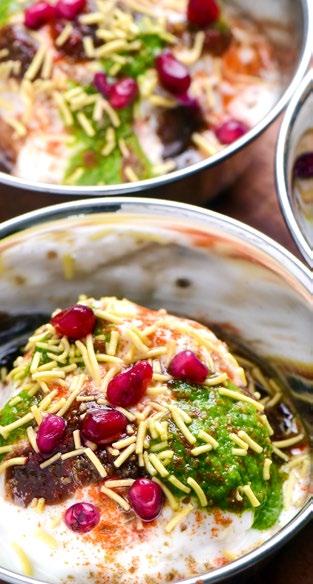
DAHI VADA
The Dahi Vada (or Dahi Bhalla) is an instant mood-lifter, you’ll all agree! There’s something about the cooling-yet-spicy character of it that makes it perfect for a Holi lunch.
Ingredients for Vada
n ½ cup urad dal (split black lentils), soaked for 4 hours
n 4-5 black peppers, crushed coarsely
n 1 tsp cumin seeds/jeera
n Salt to taste
n Oil for frying.
Ingredients for garnish
n 1 cup full-fat yogurt, whisked with 1 cup water.
n 2 tbsp green chutney
n 2 tbsp tamarind chutney
n 1 tsp roast cumin powder
n ¼ tsp red chili powder or as per taste
n 2 tbsp pomegranate seeds
n Salt to taste
Instructions
n Grind the urad dal in a blender with minimal water to form a smooth batter.
n Add cumin, pepper, and salt; mix well.
n Heat oil in a kadhai/wok or saucepan.
n Take a small portion of the batter and lower it slowly into the hot oil.
n Fry on medium flame until golden brown.
n Allow to cool and dip them in a bowl of water.
n Squeeze gently one at a time, to remove excess water.
n Season yoghurt with salt, roast cumin powder and red chilli powder.
n To serve, place each vada into bowl, and pour yoghurt over, liberally. Drizzle the chutneys over, alternating tamarind chutney with green. Sprinkle some more cumin powder and red chilli powder on top, and finish off with pomegranate seeds.
(Serves 4)
34 MARCH 2024 www.indianlink.com.au FOOD
FOOD, FROLIC!
these recipes that’ll totally up your your squad, rock those aprons and let’s that you can flex on Insta.

NAMAK PARA
Move over, chips! Here’s a flavourful treat to bring a spicy crunch to your festive table.
Ingredients
n 1 cup plain flour (or use a halfand-half plain flour and wholemeal combo)
n 2 tbsp oil
n 1/2 tsp salt (adjust to taste)
n 1/2 tsp cumin seeds
n Water for kneading
n Oil for frying.
Instructions
n In a large mixing bowl, combine oil with plain flour and salt. Mix until the dough comes together.
n Knead the mixture into a mediumstiff dough.
n Divide the dough into equal parts and roll each portion flat, like a roti, on a sheet of baking paper. (Avoid rolling it too thin; thicker pieces cook better.)
n Use a knife or pizza cutter to create your desired shapes.
n Prick the pieces with a fork to prevent them from puffing up during frying.
n Heat oil and fry until crisp.
n Maintain medium-hot oil; overly hot oil may result in softer crackers.
n Remove on to a tissue to absorb any excess oil. (Serves 4)
HOMEMADE HOLI COLOUR POWDER
Here’s how you can paint the town in vibrant hues, all while championing sustainability. Homemade Holi colours are organic and non-toxic, and really, the way to go. Eco-friendly joy!
Ingredients
n 6¼ cup corn flour/rice flour/tapioca starch
n ½-1 tsp food colouring of your choice
Method
n Combine the chosen food colouring with the rice flour/corn flour/tapioca starch.
n Stir the mixture with a spoon, adding more colour until you achieve the desired intensity.
n Transfer the mixture to a metal plate or bowl and place in a preheated oven (not running) for 15-20 minutes.
n Pass the coloured mixture through a sieve.
n Store the finished product in an airtight container.
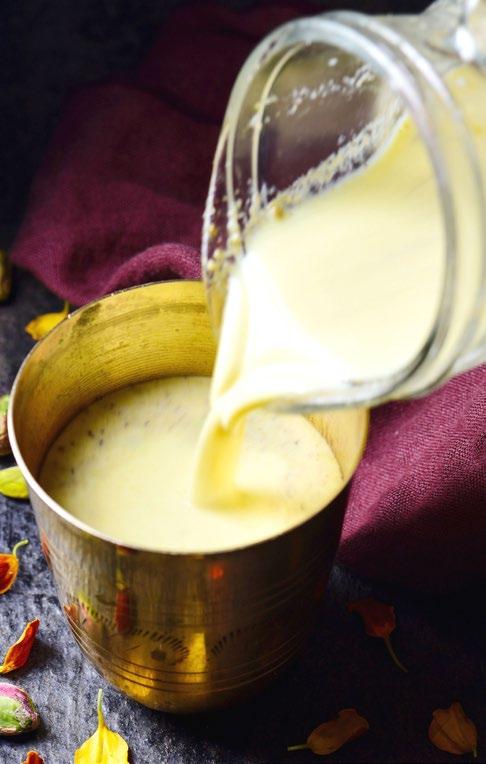

HOMEMADE THANDAI POWDER
With its aromatic blend of spices, a glass of thandai refreshes the soul, offering a break from the day’s playful chaos with its cool and creamy texture.
Ingredients for Thandai Powder
n 1/2 tbsp fennel seeds
n 1/2 tbsp poppy seeds (khuskhus)
n 1/2 inchpiece cinnamon
n 1/2 tsp nutmeg powder
n 4-5 white peppercorns (optional)
n 1/2 tsp cardamom powder
n ¼ cup almonds
n ¼ cup cashews
n 2 tbsp pistachios
n 2 tbsp rose petals
Instructions
n Toast the spices in a pan and let them cool. Then grind to a powder.
n Separately, grind the nuts with rose petals.
n Mix both the nut and spice powders, and grind again. Store in an airtight container.
Ingredients for Thandai
n 1 litre milk (full cream or skim milk)
n 4-5 strands of saffron
n Sugar, to taste
n Thandai powder
Method
n Mix saffron and sugar into milk and bring to a boil. Cool, then chill in refrigerator.
n When ready to serve, add the thandai powder to the chilled milk. Use 3-4 tbsp of thandai powder per litre of milk.
n Serve immediately.
(Serves 4)
MARCH 2024 35


17
BY RITAM MITRA
-year-old golfer Vidur Subramaniam is on a mission. In January alone, the final year Hills Grammar School student dominated a field of the state’s best junior golfers to win the gruelling Harvey Norman Sydney Week of Golf tournament, then went on to place 11th in the all-age Australian Men’s Amateur Championship, beating out hundreds of leading amateur golfers from 11 countries.
But for Vidur, these achievements are just the beginning of what he hopes – and by all accounts, what promises to be – a long and successful career in what many consider the toughest sport in the world.
Vidur’s mother, Revathi, expected her son’s initial interest in golf to last a day or two, at most. But that’s because Vidur was only three years old when he first picked up a club. “We went to the golf course one day to register my husband, and Vidur was tiny,” says Revathi. “But Vidur said he wanted to play as well, so the pro at the golf shop picked up a club, cut the shaft and gave it to him,” she laughs.
Now, the serendipity of that moment is clear. “When I first picked up a club, I immediately fell in love with the game, all aspects of it,” says Vidur. “My favourite thing about golf is that I can play a course ten times and on every hole my shot will be different every time I play the course. No factors will ever be the same – the wind, the weather, everything will always change.”
Even in its relative nascency, Vidur’s golfing career has had its ups and downs. Last year, a spinal stress fracture forced him out of the game for several months, the by-product of a rigorous gym routine. While Vidur has wound back his time in the gym, he still maintains a demanding training regimen that involves several strength and conditioning sessions a week,

Golf prodigy
Meet Vidur Subramaniam, the elite golfer dominating junior golf in NSW and gunning for an American college scholarship
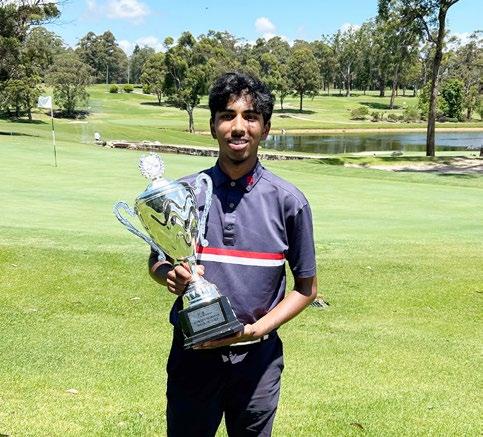
as well as seemingly endless hours of skill development and game analysis.
It’s an investment that Vidur considers a necessity. “That’s what makes golf so entertaining,” he says earnestly. “If you hone in your stats, you can figure out the areas that need to be improved. If I only have 7 hours to play golf in a week, I’m dedicating those 7 hours to the deficits in my game.”
Vidur is no stranger to competing with
grown men on the course – in fact, he relishes the challenge. “[Placing 11th at the Australian Men’s Amateur Championship] was super satisfying, but my view is that everyone is a competitor regardless of their age, and I am more focused on skill development. As a junior, I really wanted to compete in this event and produce a good result, because it gives me more exposure and allows me to make a statement,” he says.
It’s no surprise, then, that Vidur
demonstrates a sense of maturity that belies his age, whether it’s his clarity of thought or his awareness of the bigger picture. Speaking about the relative lack of ethnic diversity in Australian golf, Vidur is matterof-fact: “Being of a diverse background gives me my own sense of personality. It’s who I am. It makes me stand out a little bit more, it makes me unique.”
“I’d like to set an example for younger kids, especially of Indian descent who are aspiring to be a professional in any sport – if you’re producing results, you’re hardworking and you’re determined, you will continue to achieve success,” says Vidur.
Vidur dedicates his success to his parents. “The amount of sacrifices they make in their day-to-day life for me, including 4am starts – I still haven’t made it, I have a long way to go but I wouldn’t be anywhere without them,” he says.
He speaks glowingly too, of two important figures at the Ryde Parramatta Golf Club: his caddy, Bobby Laing – the “greatest guy you’ll ever meet” – and his “incredible” coach, Glenn Kelly.
In the next few months, Vidur hopes to secure a golfing scholarship with an American college, both to launch his professional career and to tick off a more personal goal: “I want to be self-made,” says Vidur adamantly. “I want to go to college on a decent scholarship so I’m not putting any financial burden on my parents.”
It’s a little glimpse of what Revathi describes as Vidur’s “sheer grit”. “When he’s determined, he goes all out, and when he’s down, he knows how to lift himself back up. It’s a quality that I can learn from,” she says proudly.
Vidur’s father Vijay echoes those sentiments. “While I’m extremely proud, the road ahead is going to be even more challenging. He’s got to show a lot of grit, determination, focus and have great skills. He’s demonstrated he’s got all that, but now it’s about amplifying it.”
There’s no doubt that Vidur’s journey is just beginning.
36 MARCH 2024 www.indianlink.com.au SPORT
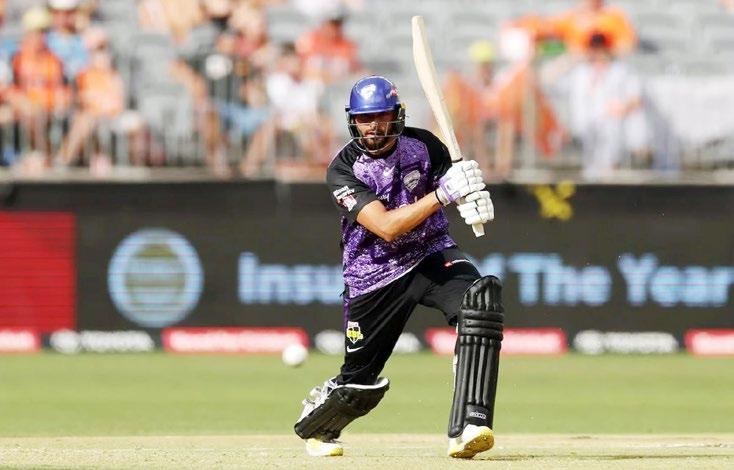
Postie one day, BBL cricketer the next
Nikhil Chaudhary, only the second Indian-born player to ever play in the Big Bash, opens up about his cricket career
 BY RENESH KRISHNAN
BY RENESH KRISHNAN
Congratulations on a great debut season, Nikhil Chaudhary. I think it's fair to say that you're actually a fan favourite now even after one season. Did becoming an overnight sensation shock you?
It didn't surprise me, to be honest. It was long time coming. I’ve been playing for the last 10-12 years in India, representing my state Punjab in the domestic Ranji Trophy. Tried to get in the IPL a couple times. Moving to a new country was a bit of a struggle, but I've been working hard the last four years in Brisbane and finally got the crack this year. Very grateful for the opportunity from Hobart Hurricanes - the management, the players, they welcomed me pretty well.
How did it all begin for you?
I didn't start cricket until 13-14. Kids typically start at coaching centres at 9-10, learning the drills and skills. I started playing cricket in the park with friends! My skills were always just hitting the ball hard, as hard as possible. And I was a fast bowler. At high school, our PE teacher, a cricketer himself (saw potential and) took me to a cricket academy. From then on, it's been a rollercoaster. I started as a fast bowler, became an off spinner, then became a batsman again at 17-18.
What did the Ranji experience teach you?
Bhaji paaji (Harbhajan Singh) was my captain, and Yuvraj Singh was the vicey. I
think the biggest thing I learned from them was how cricket was their entire life. Your work ethics, how you go to the game, what you eat before the game, what you eat after and what you do during the game. But obviously you can't become Yuvraj Singh just by talking to him. It takes years. Observing these players perform in a pressure situation was very important. It helps me even now – like in my, debut game against Perth Scorchers.
If I'm correct, you were forced to stay here during lockdown. You were visiting your uncle and you planned to go back when the borders opened. What made you want to stay on?
It was a very tough, decision for me – to be giving up Ranji Trophy, and having my family around me. But I was ready for it, because I wanted a change in my life. I wanted to make my own bubble. I love the cricket culture here. People love the cricket, but at the same time, they're very simple about it. There's no rush or cultural pressure about it. It’s a simple, low-key thing, and yet when you play, 50,000 people turn up. The environment around your teams, your coaches, management, that really inspired me to stay back as well. I had my return ticket, but I cancelled it. And it wasn't the best of the starts because I hadn't told anyone that I'd been a domestic player in India. I started from second grade. I performed well in my first two games and then went into first grade.
You worked in a Mexican restaurant and also as a postie for Australia Post. Was it hard for you to do - the side career while
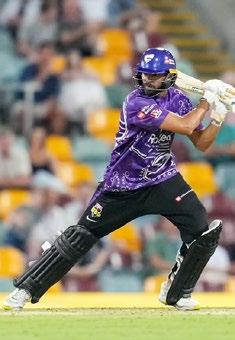
also trying to focus on cricket?
The courier job consumes a lot of time and body strength. You start at 6am, sort 200 to 250 parcels, then load them in the van and drive out to deliver. I’d finish by 2pm, 3pm, sometimes 4. Training twice a day was very hard, after working eight, nine hours. So, I designed a plan – working out at 5am, then work, then get to cricket skill sessions. I’d finish at 8 or 9 pm, coming straight home to dinner and bed. I did that two, and a half years. (Shout out to all the posties, and courier workers out there. They work very hard).
Mum was like, you don’t have to work, we’re there for you. Dad was quite concerned about whether the cricket career would take off here. It bothered me that
I was causing my family such concern. I thought I’d give it one last crack or do something else. And then in September, I got the call!
The family was thrilled of course, but to be honest I thought to myself, our team is so packed, where will they put me? Will I get to play at all?
First match went through, second match we went to Perth. I was 12th man. Out of the blue, Matthew Wade got a back spasm and was out, and my coach said, okay, you’re in. It was an hour before the game began. Sure I was nervous, but once I got out in the middle, the pressure just went away.
One of your best moments in the season was hitting that absolutely fantastic six against Haris Rauf.
I’m a very competitive person. I can’t imagine going in and not winning the game. I think that's the biggest thing in my cricket. I'm not the most skilful batsman you'll ever see. I'm not the most skilful leg spinner you'll see, but I train with the confidence that it doesn't matter who the bowler is, it's the ball, right? So, you gotta hit the ball, not the bowler. Even that shot you refer to, it wasn't in the best of the spots where you can hit a six.
Another moment of the season was when Brett Lee spoke to you in Hindi. What was it like having an Australian legend speak to you like that?
Yeah, I've got a funny story behind it. It was just my second Big Bash game, and you wouldn't expect to get mic'd up. So, I was surprised when my manager came up to me and said Fox Sports want to mic you up for the game. I'll do it, I said. Brett Lee was like, Hey, Nick, it's Brett Lee, aap kaise ho? And I was like, main theek hoon, aap batao. And that was such a surprising moment, because growing up, everyone in my academy and school used to copy his action. He was the best. He was not just the best Australian bowler, he was the best Australian cricketer for us. There's a different love and space for Brett Lee. After the game, I was signing autographs. And suddenly, I saw him, and started running towards him. He said to me, you’re huge –you don’t look so big on TV. I also got him to do the thappi – that was special.
You ran after Brett Lee for your fan moment, now there are kids looking to get your autograph for their fan moment. This time last year, you may not have been used to that. Is that something that you're used to now, or is it still sinking in?
Even five months ago, I was just a postie, a courier driver delivering parcels. And now I’m doing autographs. I'm very grateful. There’s so much love, from all the people standing there to just watch me playIndians, Pakistanis, all our community. Yes, people do recognize me and come up to me for pictures and autographs. It’s a huge moment and a big responsibility too.
It's only been one season for you, and you've already done so well. What more can we expect from you?
There are a couple offers from different leagues. Hopefully I'll be playing in maybe a couple of leagues just before the Big Bash or during the off season. I’d like to play for the state and then get into the yellow jersey as soon as possible.
MARCH 2024 37 SPORT


 IBY PETRA O’NEILL
IBY PETRA O’NEILL
've taken many long flights, the longest involving four flights between Sydney and Kangerlussuaq, Greenland, via Honolulu, Seattle and Toronto – and all I can say is that making all connections left me frazzled, with nothing to break up the grinding tedium of the long haul, wedged in a teeny seat. So, on my last trip, I took it
Why a stopover makes good sense
slow, spending a few hours in each airport between flights. I enjoyed quality meals, had a massage, even a swim. It took longer to get there, but there was no stress, no jet lag and I felt much more refreshed when I arrived.
ALLOW TIME TO GET THERE
Travelling becomes trickier the more farflung the destinations are that you go to, as you cross multiple time zones or the international date line.
If the journey involves several connecting
flights, try to book with one carrier, or at least their code share partners to maximise your chances of making connections if delays occur. If you're booked on a tour or cruise, plan to arrive at your destination at least one day beforehand, since flights can be delayed or even cancelled.
Before booking your flights, check out the airports where you’ll be transiting, and estimate the time needed to connect with your onward flight. Allow time to clear airport security, check if the flight departs in the same or a different terminal, and if

you’re entering a country to connect with a domestic flight, you’ll need to clear customs and immigration first.
IN TRANSIT
While Singapore’s Changi Airport leads the way with a staggering array of attractions to keep transit passengers entertained - including the world’s tallest indoor waterfall, many airports have also upped the ante, offering a wide range of shopping and dining options, spas, short stay hotels, payas-you-enter lounges and airline lounges.
Pay-as-you-enter lounges are great value, often with variable prices to suit - so if you’re after just a shower, entry is often much less.
Airline lounges restrict entry to members, those holding a loyalty pass, guests of members, or business and first-class passengers.
If the airline offers you the chance to bid
Yes, there are fast ways to travel. But going at a slower pace, it turns out, has some pretty fine advantages.
38 MARCH 2024 www.indianlink.com.au TRAVEL
An Abu Dhabi stopover…
Zayed International Airport
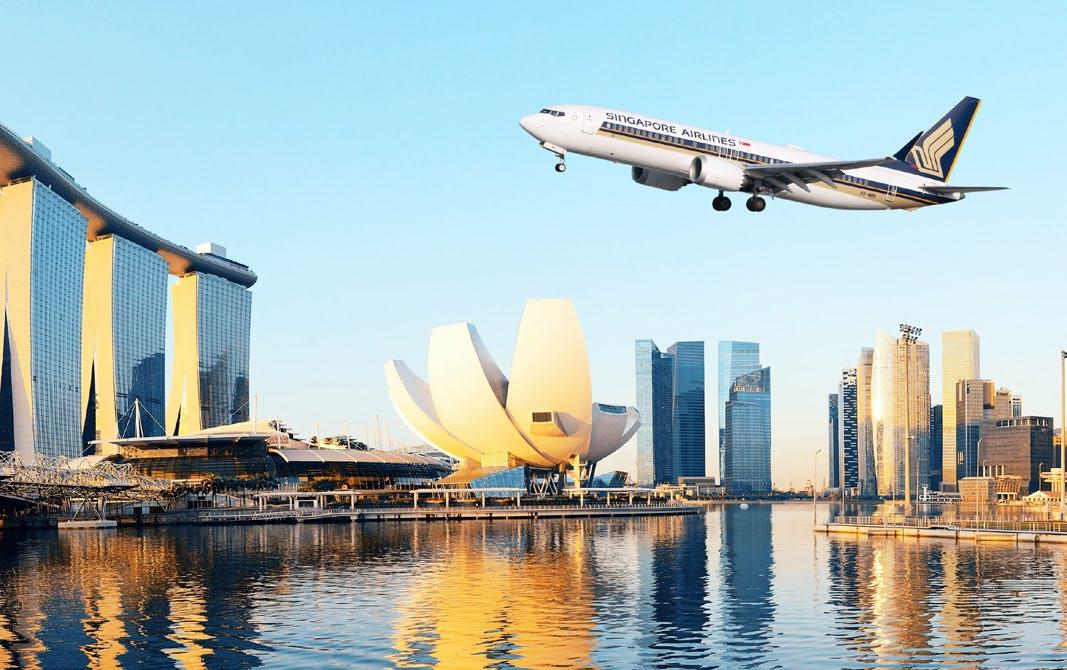
for an upgrade prior to departure, you could end up at the pointy end for a fraction of the fare, with lounge entry thrown in. When my recent Garuda Indonesia flight was delayed, I continued to relax by snacking and reading the lounge’s magazines.
While airports are pleasant enough, longer layovers call for more options. For example, at Singapore's Changi Airport, for passengers with a layover of between 5.5 and 24 hours, a complimentary tour is provided. Several airports provide complimentary tours to allow you to briefly visit cities of interest nearby, including Seoul and Tokyo.
Or book your own tour. Faced with 11 hours between flights in Bali, I booked a tour with Intrepid Urban Adventures, that offers day tours in many destinations around the world. I was met on arrival with my name on a sign, whisked around with a driver and guide for scenic sightseeing, photo stops, shopping, a swim, and enjoyed a beautiful sunset cocktail on the beach. It worked a treat and was such an amazing way to end my trip.
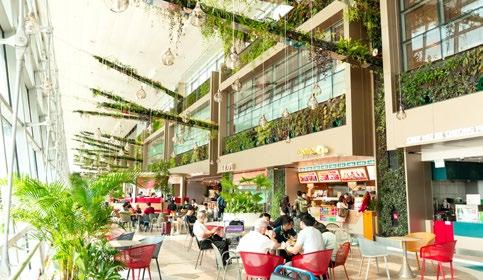
ENJOY A STOPOVER
As a way of enticing passengers to fly, some airlines provide packages designed in collaboration with local tourism authorities to showcase the region and provide memorable experiences. Seek out those airlines that offer great incentives for a stopover, with a choice of free or

heavily discounted hotels, and savings on sightseeing tours, tourist attractions, gallery and museum entry fees. Taking advantage of such stopovers is one of the best ways to stretch your travel budget. For example, Etihad offers a stopover package in Abu Dhabi, UAE, that includes transfers and accommodation.
A stopover can also be a great way to end an overseas trip. Instead of flying from Australia direct to the United States, consider flying with Fiji Airways or Hawaiian Airlines and spend a few days on a tropical beach on your return home. Suggested destinations for a great stopover include Singapore, Bangkok, Abu Dhabi, Dubai, Hong Kong, Honolulu and Nadi.
It's also a great way experience destinations that you may not have otherwise thought to visit at minimal cost, and allows you to sample them to decide if you'd like to return to explore in greater detail. For a trip to Egypt, for example, I enjoyed a stopover in Abu Dhabi, and enjoyed it so much, I later returned for a 10-night cruise of the Middle East to experience the culture, sights, and cuisine in greater depth.
Or if the destination is renowned for great shopping, such as Hong Kong or Singapore, a stopover will provide the opportunity to seek out shopping bargains.
Yes, there are fast ways to travel. But going at a slower pace, it turns out, has some pretty fine advantages.

MARCH 2024 39
Changi International Airport
… or a Singapore break?
cineTALK
Worth waiting for? You decide!
Patriotic films. Crime-based fare. Legal dramas. Actors turning directors. There’s plenty on NEERU SALUJA’s watch list in March.
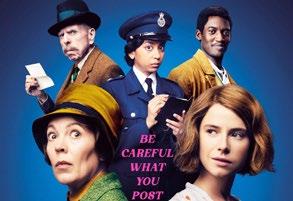
WICKED LITTLE LETTERS (In cinemas)
Actor and singer-songwriter Anjana Vasan plays the role of a police officer in this 1920s-based strangerthan-fiction true story. It follows two neighbours: deeply conservative local Edith Swan (Olivia Colman) and rowdy Irish migrant Rose Gooding (Jessie Buckley). When Edith and fellow residents begin to receive wicked letters full of unintentionally hilarious profanities, foulmouthed Rose is charged with the crime.
Releasing: 21 March 2024

OPERATION VALENTINE (In cinemas)
A Hindi-Telugu bilingual, Operation Valentine is a patriotic, action-based thriller set on the 2019 Pulwama attack on India by Pakistan. Popular Telugu actor Varun Tej plays the role of a skilful IAF pilot who protects his motherland with the help of radar officer played by ex-Miss World Manushi Chillar. As India and Pakistan lock horns in this aerial battle, will this Operation be as successful as the same-themed film Fighter?
Releasing: 1 March 2024

JOSHUA IMAI POL KAAKHA (In cinemas)
The plot of this Tamil thriller unveils as Kundavi Chidambaram, a US Assistant Attorney and a Chennaibased contract killer Joshua fall in love, in Chennai. They drift apart and things get difficult for Kundavi when she fights a high-profile drug case in the US. Joshua willingly puts his own life at risk to save her.
Releasing: 1 March 2024

LAAPATAA LADIES (In cinemas)
In this film directed by Kiran Rao and produced by Aamir Khan, two young brides get separated during a train journey in rural India, kicking off a hilarious and dramatic investigation.
Releasing: 1 March 2024

KAYO KAYO COLOUR (In cinemas)
Set in the slums of Ahmedabad, this Gujarati film revolves around the struggles, conflicts, joys and ways of a life a working-class Muslim family.
Releasing: 1 March 2024

THALAVAN (In cinemas)
This Malayalam language film explores how hierarchy works within a police station. Directed by Jis Joy, it stars Biju Menon, Asif Ali, Ranjith and Jaffar Idukki in lead roles.
Releasing: 1 March 2024

TILLU SQUARE (In cinemas)
This Telugu language romcom /crime comedy film is a sequel to DJ Tillu. This time round Tillu’s life is turned upside down following a mysterious murder.
Releasing: 29 March 2024
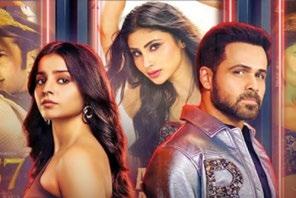
SHOWTIME (Disney Hotstar)
What happens behind the multi-million dollar industry of Bollywood? Is the industry as glamourous and colourful as we see it? Are the struggles real? This web series starring Emraan Hashmi, Mahima Makwana, Mouni Roy and Naseeruddin Shah will reveal the dark and deep secrets.
Releasing: 8 March 2024

DO AUR DO PYAAR (In cinemas)
Another directorial debut by Shirsha Guha Thakurta, about a couple on the brink of a breakup that are cheating on each other with two sexy outsiders. Starring Vidya Balan, Pratik Gandhi, Ileana D’Cruz and Sendhil Ramamurthy (of Never Have I Ever fame), this contemporary romcom looks interesting with its fresh pairing.
Releasing: 29 March 2024
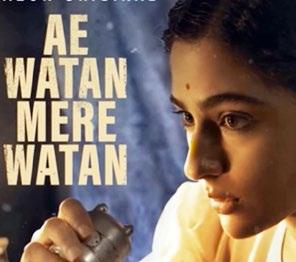
AE WATAN MERE WATAN (Amazon Prime Video)
Sara Ali Khan makes her OTT debut as a lead actor with this patriotic film. It is based around an underground radio station led by a courageous young woman that changed the course of India’s freedom struggle in 1942. It draws inspiration from freedom fighter Usha Mehta’s journey.
Releasing: 21 March 2024
40 MARCH 2024 www.indianlink.com.au ENTERTAINMENT

SHAITAAN (In cinemas)
With powerhouse talents Ajay Devgn, R. Madhavan and Jyotika, this supernatural thriller is a battle between good and evil as a family embodying the forces of righteousness fight against malevolence. It’s always good to see the intense Ajay Devgn playing roles of his age, becoming the most loved filmi family man!
Releasing: 8 March 2024

YODHA (In cinemas)
Hold on tight as Siddharth Malhotra takes you on an action-packed flight as the ‘Yodha’. After terrorists hijack a plane, an off-duty soldier comes up with a plan to defeat the hijacker. Story sounds familiar? Let’s see if this thriller, also starring Disha Patani and Raashii Khanna packs enough punch to make the plane take off.
Releasing: 15 March 2024

CREW (In cinemas)
Fasten your seat belts for this flight that boards the glamourous and talented crew of Tabu, Kareena Kapoor and Kriti Sanon. The trailer for this film looks as thrilling as the cast. Wait, there’s more to it - special appearances by comedian Kapil Sharma and Diljit Dosanjh!
Releasing: 29 March 2024

MADGAON EXPRESS (In cinemas)
Actor Kunal Khemu’s directorial debut follows three childhood friends who embark on a trip to Goa that goes completely off-track. The film is led by the talented trio of Divyenndu, Pratik Gandhi and Avinash Tiwary. Nora Fatehi is also in the film - not to flex her dance muscles but her acting chops this time.
Releasing: 22 March 2024
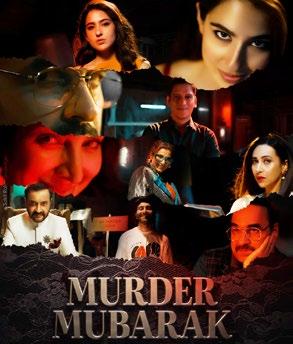
MURDER MUBARAK (Netflix)
This mystery murder thriller boasts of an ensemble cast including Pankaj Tripathi, Sara Ali Khan, Vijay Varma, Dimple Kapadia, Karisma Kapoor, Sanjay Kapoor, Tisca Chopra. Let’s hope the mystery is as good as the troupe is!
Releasing: 15 March 2024

MAAMLA LEGAL HAI (Netflix)
This comedy legal drama is set in the district court of Patparganj, New Delhi. It revolves around a group of legal eagles led by VD Tyagi who don’t shy away from taking up challenging cases. Created by Sameer Saxena, the web series features Ravi Kishan, Nidhi Bisht, Yashpal Sharma and Naila Grewal, among others.
Releasing: 1 March 2024
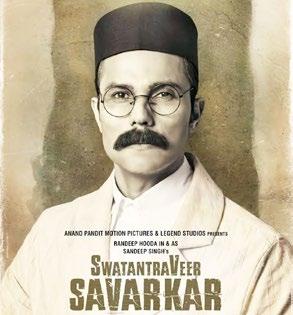
SWATANTRYA VEER SAVARKAR (In cinemas)
Actor Randeep Hooda makes his directorial debut by bringing to life the legendary yet neglected tale of Swatantrya Veer Savarkar – a visionary, freedom fighter and a firebrand. Starring Randeep Hooda, Ankita Lokhande and Amit Sial, the film is slated to release in two languages – Hindi and Marathi.
Releasing: 22 March 2024

SUNFLOWER 2 (ZEE)
The second season of crime comedy Sunflower starring Sunil Grover, Ashish Vidyarthi, Ranvir Shorey and Mukul Chaddha offers a glimpse into the intriguing world of a middle-class housing society in Mumbai.
Releasing: 1 March 2024
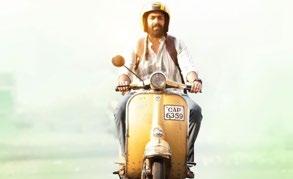
ONDU SARALA PREMA KATHE (In cinemas)
This Kannada romcom is true to its title of ‘a simple love story’. The protagonist dreams of becoming a music director and marrying a woman that can match the rhythm of his musical heartbeat. Will his dreams come true?
Releasing: 1 March 2024

BLACKIA 2 (In cinemas)
Punjabi director Navaniat Singh and actor Dev Kharoud return with this action-packed sequel. Gama, a boy from a remote village, starts smuggling to help his community. But as he rises in the underworld, he becomes one of its biggest and most feared figures.
Releasing: 8 March 2024

THE SCAVENGER OF DREAMS (In cinemas)
This is the story of a family of waste collectors in Calcutta who work one of the richest localities of the city. They sift through the garbage to pick objects for their 6-year-old daughter to tell bedtime stories at night.
Releasing: 2 March 2024
MARCH 2024 41
Hindu Priest - Full time position at Shri
About the Shiva-Vishnu Temple and the Hindu Society of Victoria (HSV)
Hindu Society of Victoria (Aust) Inc
52, Boundary Road
Carrum Downs Victoria 3201
Hindu Society of Victoria (HSV) being a communityoriented not-for-profit charitable organisation strives to serve the Hindu public as well as the community at large.
The Hindu Society of Victoria Inc. (HSV), through the elected Management Committee, manages the affairs of the Temple, the vegetarian cafe and the multifunctional Cultural and Heritage Centre. Other spiritual discourses, concerts and functions are sponsored by the society.
The Centre also caters for holding traditional weddings and other community functions. Vegetarian meals are offered at the Café for devotees and the public.
Shri Shiva-Vishnu Temple in Carrum Downs, Victoria is one of the largest temples in the southern hemisphere and is one of the oldest in Australia.
It offers a religious and spiritual home for the growing numbers of Hindus, one of the fastest growing religions in Victoria. Starting with the 1st of January New Year celebrations in a grandiose way attended by more than 8,000-10,000 devotees, more than a dozen of major religious and cultural festivals, Homa (fire sacrifices) ceremonies, Diwali, Holi, harvest festival (sun solstice), ethnic new year celebrations are held every year. Two 10-day festivals (Rathotsavam - chariot festival) are celebrated annually. One for Lord Shiva known as Shivan Mahotsvam and another one for Lord Vishnu known as Vishnu Bramotsvam. Other regular ritualistic poojas, special offerings and prayers to mark special auspicious days every month according to Hindu
cosmology and astrological calendar are conducted. Annually, more than 100,000 devotees visit the temple. Religious services are offered according to the two major traditions of Hinduism.
They are Saivite and Vaishnavism. Rituals and poojas strictly follow the ancient tenets and practices laid out in Vedas and Agamas. These promoting the Hindu philosophy and way of life of non-violence, vegetarianism, karma, and spirituality as the basic foundations of life.
Highly trained religious ministers (priests) are employed to conduct the religious services, as well as to impart their knowledge of the practices to lead peaceful and fulfilling lives for the devotees.
ABOUT THE ROLE:
Commencing on the 25th March 2024.
In this exciting Priest role, you will play a crucial role providing various religious services to the devotees and conducting;
• Daily Poojas
• Various kind of daily Abishekams
• Performing yearly Mahotsvam
• Uthra Homam
• Skanda Homam
• Chandi Homam
• Pirayashitha poojas
• Weddings
• Poojas at devotees’ home, etc
SKILLS & EXPERIENCES:
• Completed education (agamas & mantras) from
reputed school (Gurukulam)
• 10+ years of experience as a Sivachariar Kurukkal;
• Fluent in all the relevant Mantra in Sanskrit;
• Able to read and write in English;
• Experience in conducting Mahotsvam festivals
• Experience in conducting Kumbhabishekams
• Conducted Homams
ABOUT YOU:
You are a genuine "people person" with a passion for helping other and a strong interest in sharing the Hinduism knowledge.
You are able to successfully guide other priests and work as team.
Maintain the harmony and spirituality at all the time. Be able accept flexible working hours.
SALARY AND BENEFITS:
Competitive salary and benefits will be offered to the successful candidate.
CONTACT:
For more information, please contact the Secretary on 0414 281 507 or email to secretary@hsvtemple.org.au quoting “Sivachariar: Alternatively, apply to secretary@hsvtemple.org.au
Please note: Employment is subject to a National Criminal History Check and a Working with Children's Check and appropriate working Visa. Flexibility in working hours and travel within Victoria may be required. A current driver's license is essential.




42 MARCH 2024 www.indianlink.com.au
Temple, Carrum
38.81sq House size 476m2 Block size GARAGE 2 POWDER 1 BATHS 2 4 BEDS Call Udit on 0488 860 778 gfacharityhouse.com.au GOOD FRIDAY 29 March 2pm Open for inspection | Every Saturday & Sunday 11am-12pm | Every Wednesday 6pm-7pm
Shiva Vishnu
Downs

MARCH 2024 BY MINAL KHONA
Minal Khona has been reading tarot cards for the last two decades. She uses her intuition and connect with the cards mostly to help people.
Signifying healing, the card for Aries could see an engagement, marriage, or baby in their lives. A trip could lead to a new beginning. Those in the creative fields can expect an influx of ideas. For any repeated patterns that set you back, do some healing work. A new project could add to your income. A long-held wish will come true. If you have the opportunity to try something new at work, grab it with both hands. Clarity in every situation is coming.
The emperor card drawn for you, indicates the formation of a relationship or a new business, or a promotion at work. Singles could receive a marriage proposal. Taurus women, work on issues you may have with your father or brother as it could impact your relationship if you are in one. The health of a loved one could cause concern. Finances improve and you could even be given a business to run. Wishes manifest, so accept what is coming for you.
Structures - within organisations, family or your tribe - will be important this month. As will doing the right thing and playing by the rules. Singles will not compromise if the sparks don’t fly. Those looking for a change at work will find something they actually enjoy doing. The self-employed need to be wary of those who owe them money. Help will come from an unexpected source. You will get clarity about a situation that caused anxiety. Look to foreign sources for business growth.
Singles will be disappointed in love yet again; ask yourself what you need to bring to a relationship for it to work. You‘ll get help from someone who will execute a project successfully. If you feel disinterested with everything, visit a doctor as you may be depressed. Additional symptoms could be anxiety or extreme tiredness. If your money is stuck, avoid brooding about it as gains are on the way. Take on only as much as you can handle at work and in personal life.
Ups and downs and unexpected turn of events could occur. An ex could make a comeback for some but you might not get together again. Professionals need to think before making what could be a lifechanging decision. Expenses could go up. The wheel of fortune card indicates that a cycle is ending - a new one is set to begin. Watch out for mood swings and keep emotions in check. A friend could end up in hospital. Any upheaval will lead to positive outcomes.
The ace card, drawn for you, indicates beginnings. Use your mind to solve problems instead of thinking from your heart will help. Singles could meet someone really exciting or someone who has a crush on them may reveal their feelings. The self-employed can expect to sail through red tape if starting a new business. A marriage could get rocky but it is temporary. Get to the root of whatever is causing you stress. Money owed to you will be delayed.
The card for Aquarius is drawn for Libra, also an air sign. If you are a single female, you could meet an Aquarian – but this card signifies aloofness so be sure he has what you are looking for. Use ideas to get ahead at work; at the very least, be confident about them. Some friction could arise with family. A health issue, however minor, may need medical attention. Find a new way to see things from others’ point of view.
You may find yourself nostalgic about the past. A new opportunity at work will give your spirits a much-needed boost. You will get all the support you need at work and in your personal life. More money than expected could be earned too. Singles will have clarity about the kind of relationship they want. Trust your intuition when it comes to ideas. You will find answers if you put your query out to the universe and believe in its powers.
A major arcana indicates a pre-destined turn of events. Singles could get married, there could be a pregnancy, and some happy news can be expected. If you feel run down, take a break and recharge. Finances are good and new funds too will come. Legal settlements will go in your favour. You are in a transitional phase of your life and it will lead to major transformation, mostly spiritually. Keep an open mind and be ready to receive new ideas.
Watch out for extra chores due to someone else. Singles or those dating could still be waiting for a sign as to which way things are progressing. Watch out for exhaustion due to extra responsibilities being dumped on you at work or at home. Avoid taking on more than you can handle. Those looking for a new job could get an opportunity that doesn’t come every day. Stick to your goals and you will achieve them. Don’t settle for less.
New opportunities come along as you let go of the past. The self-employed will be looking at new partnerships. Those in a relationship might consider moving in together. Avoid over-indulgence of food or alcohol. Money that is owed to you will come and a new or a revived old business will generate more income. It is a time to harvest all your past efforts in multiple ways. Accept new offers confidently and believe in yourself. An overall abundant month.
There’s stagnant energy to be removed, and changes all around are required for growth. In a relationship, a breakdown could actually lead to a revival. Use this to look within and selfassess. Indulge in healing practices and exercise to lift yourself from a slump. Finances are in a good place. You could start a new job. Whatever the strife you are in, do not lose hope. Work on your faith and confidence levels to deal with stress.
MARCH 2024 43
TAROT
FORETELL ARIES MARCH 21 - APRIL 19 LEO JULY 21 - AUG 22 SAGITTARIUS NOV 22 - DEC 21 CAPRICORN DEC 22 - JAN 19 AQUARIUS JAN 20 - FEB 18 PISCES FEB 19 - MARCH 20 VIRGO AUG 23 - SEP 22 LIBRA SEP 23 - OCT 22
OCT 23 - NOV 21
APRIL 20 - MAY 20 GEMINI MAY 21 - JUNE 20 CANCER JUNE 21 - JULY 20
SCORPIO
TAURUS
DEAR AUNTYJI
I am a 35-year-old woman who has been in Australia for nearly 10 years. I work as a software developer for a well-known brand. I have recently started a new role - about 4 months ago - and my teammates are really fun and nice people, but I feel that I don’t really stand out. Each of them has a distinct personality and even a nickname. They are always joking and laughing in the nicest way possible. They really care for each other, but plain old bland me is like nothing. They are like imli chutney and I am like…. a glass of water or a cold idli without the sambar or coconut chutney. Auntyji, my colleagues are all technology people who are fun and entertaining. Can you please give me some tips on how I can stand out? I don’t want to appear boring. I know I am not boring, but because I am on the quiet side, I feel my colleagues might think I am dull. What to do, Auntyji?
ASK AUNTYJI
Do you have a question for Auntyji? Email it to info@indianlink.com.au
Plain old bland me
AUNTYJI SAYS
Arre my little samosa, I have just the thing for you. I can totally understand that being in technology, it’s important that you remain hip and edgy and relevant. And you don’t want to be boring. So here are two simple little things you can do. But be brave, because nothing ventured, nothing gained. First, start referring to your colleagues as food. So, if one of them asks you if you have checked in the code, say, “Oh my little samosa, of course I have checked it in.” “Or, oh, you spicy karela ki sabzi, that’s the
first thing I did.” This will become your little quirk and at first, your teammates will be taken aback, but soon, they will gauge your emotions for the day by the creativity of your terms of endearment. People will find you highly amusing and entertaining, and it’s crucial you do this with a straight face. In fact, if you are in a retro or some other session where the meeting is tense, it’s crucial you address people as food, with a straight face. If you get pulled upon this, express surprise and say, “What, you mean you heard me say that?”. Then carry on as before.
The other thing you can do is find yourself a pirate name. Like Happy One-Armed Rascal, or Scabby Ruth, or Jittery OneLegged Beauty. And then refer to yourself as such during conversations. So instead of saying, “I have checked in the code”, say instead “Scabby Ruth has checked in the code.”

Soon, all your teammates will want to have pirate names themselves. See, harmless fun that stands out by highlighting your creativity, and eccentricity. Why be like everyone else - when you can be one of a kind?
All the best, my little jalpari.

Police can be anywhere at anytime.
Police are out day and night to keep everyone in the community safe.
If you break the law while driving, you could receive large fines and lose your licence. Don’t take risks while driving and follow the road rules or chances are you will be caught.

44 MARCH 2024 www.indianlink.com.au
BACKCHAT
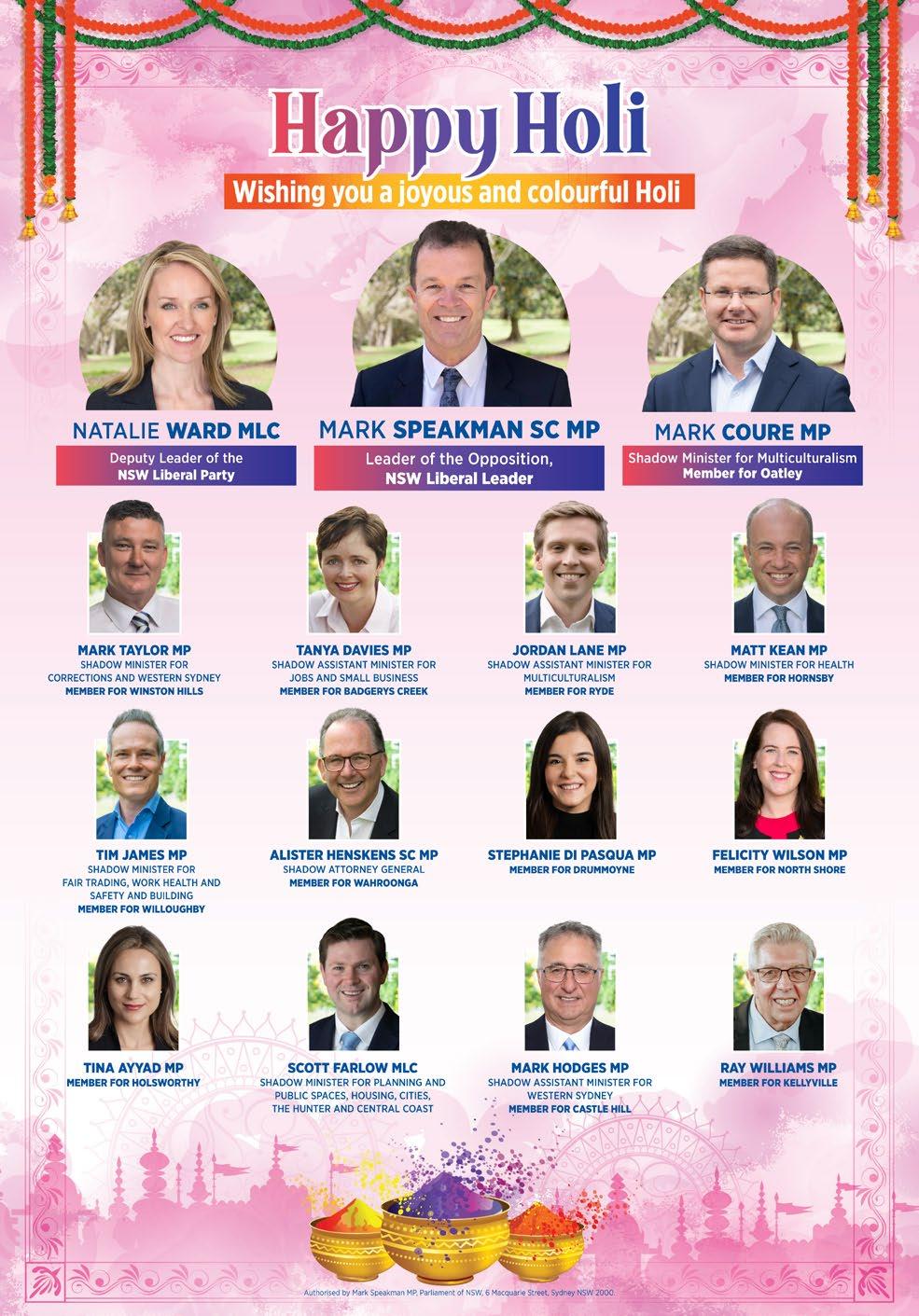
MARCH 2024 45







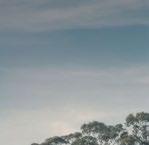























46 MARCH 2024 www.indianlink.com.au The new Kia Sorento Refined. Never tamed. Find your nearest New South Wales Kia dealer kia.com.au or 131 KIA/131 542 KIA438ILSOR3_HP







वि�द्युुत सुुरक्षाा अनुुस्माारक

प्रभाावि�त बैैटरिरयोंं क अधि�क गर्मम होोनु और आग लगनु का खतरा होोता होै, जि�सुक परिरणाार्मस्वरूप सुंभाावि�त रूप
सु सुंपत्ति� की क्षातित, चोोट योंा र्ममत्युु
होो सुकती होै। घटनुाएंं घटी हो और सुंपत्ति� को नुुकसुानु पहुंंचोा होै।
यदि� आपकोो लगताा हैै किको आपको पास एलजीी हैोम बैैटरीी हैै ताो कोृपया हैमारी किकोसी वि�शेेषज्ञ स
1300 677 273 परी संपकोृ कोरीं।

RESU 3.3 / 6.5 / 10 / 13

RESU 7H / 10H

यदि� आपको पास एलजीी कोेम या एलजीी एनजीी सॉल्यूूशेन




MARCH 2024 47
को रूप म ब्रांांडेेडे बैैटरीी मॉड्यूूल �ाला सोलाएक्स या ओपल स्टोोरीजी हैै, या यदि� आप अनिनश्चि�ता हैं, ताो कोृपया हैम 1300 476 529 परी कोॉल कोरीं। SolaX Power Station Opal Storage SolaX X-Cabinet www.lghomebattery.com.au/isyourbatterysafe 1300 677 273 productrecall@lgensol.com.au www.solaxpower.com.au/electrical-safety-recall/ 1300 476 529 service@solaxpower.com

48







 IBY PAWAN LUTHRA
IBY PAWAN LUTHRA


























 IBY RAJNI ANAND LUTHRA
IBY RAJNI ANAND LUTHRA




















































 ABY FRANKEY GERARD FERNANDES
ABY FRANKEY GERARD FERNANDES






 T“BY D r SHARON RUNDLE
T“BY D r SHARON RUNDLE





 SBY VIVEK ASRI
SBY VIVEK ASRI

























 BY GAURAV MASAND
BY GAURAV MASAND










 BY RENESH KRISHNAN
BY RENESH KRISHNAN


 IBY PETRA O’NEILL
IBY PETRA O’NEILL














































































